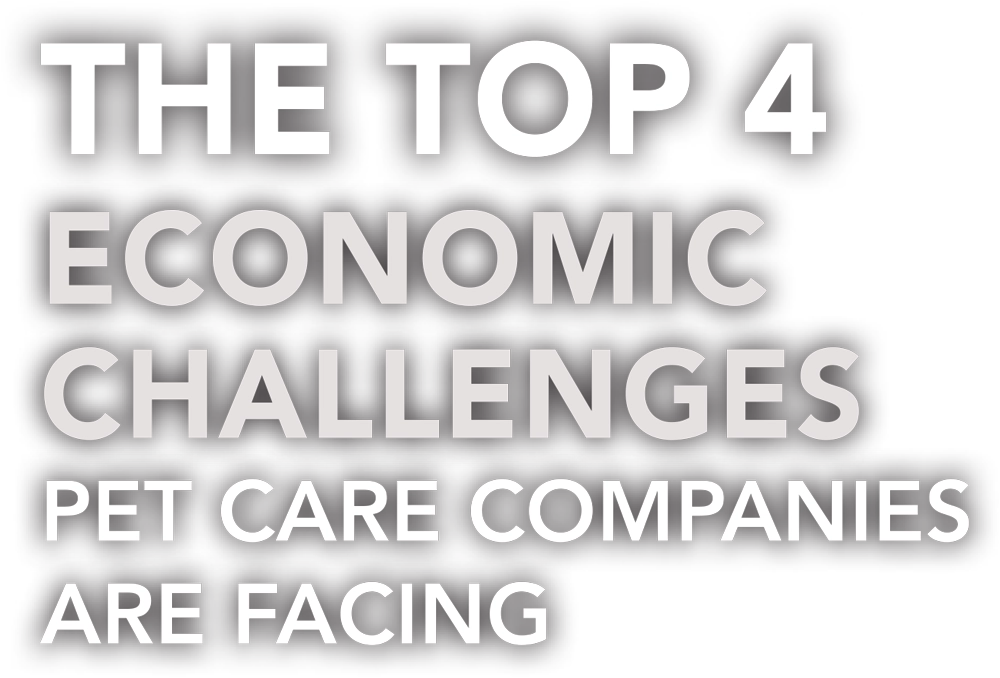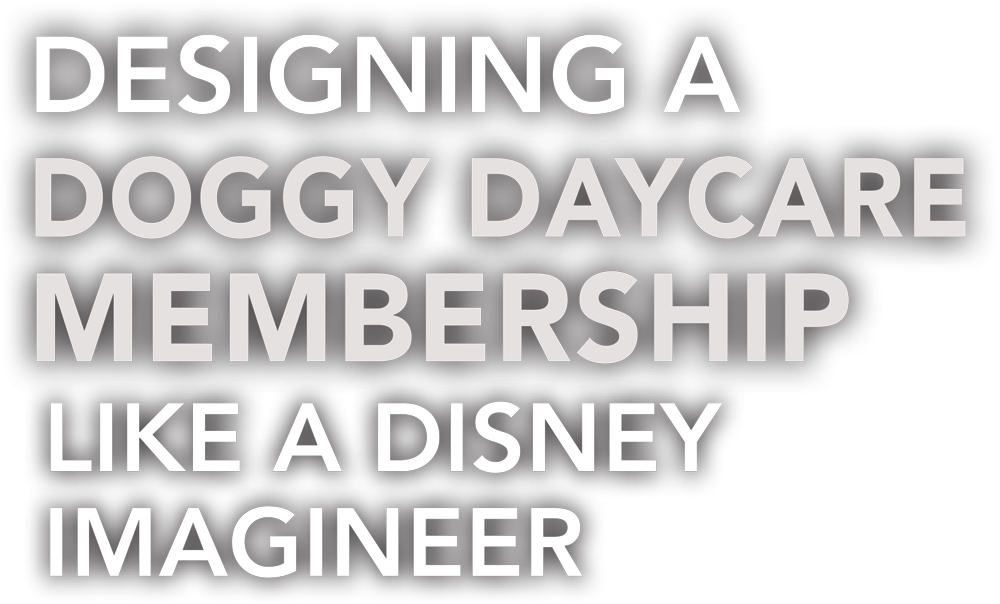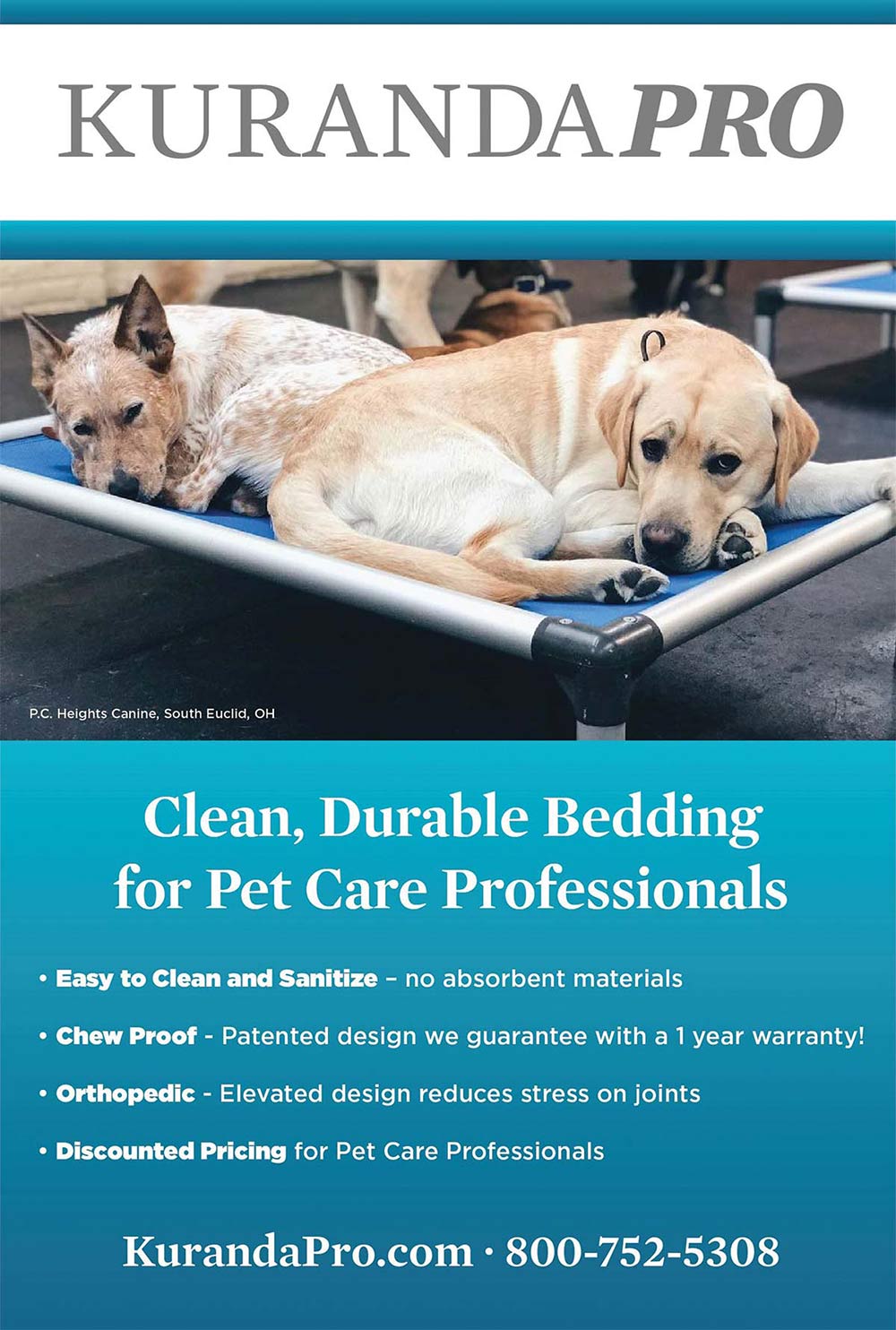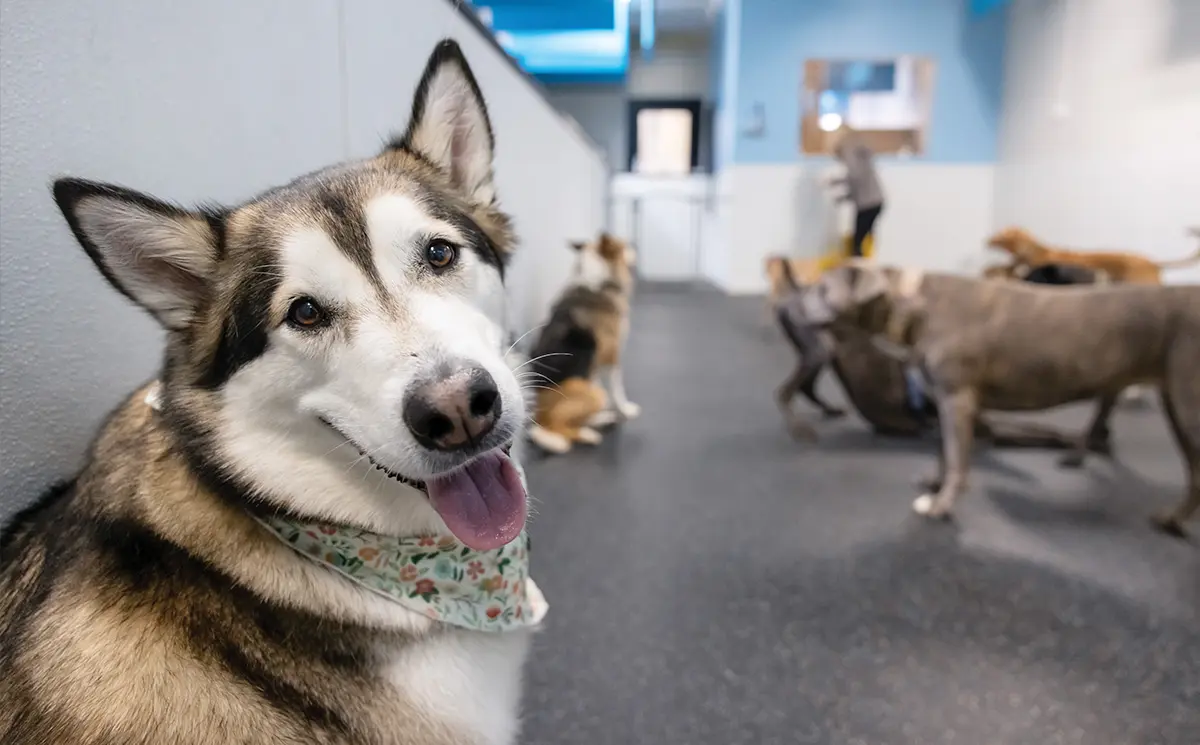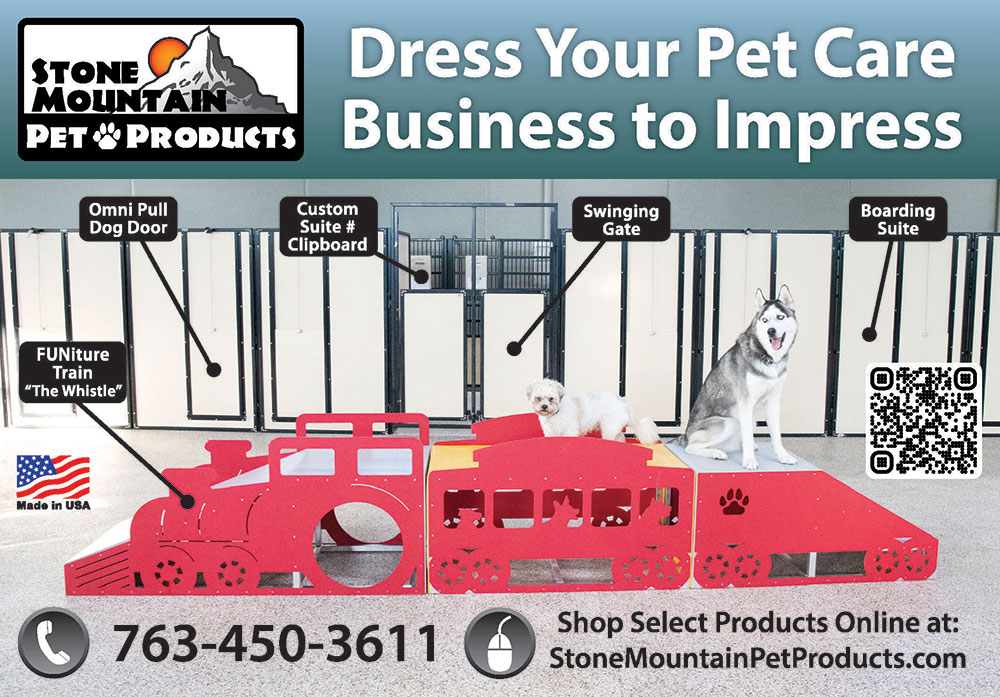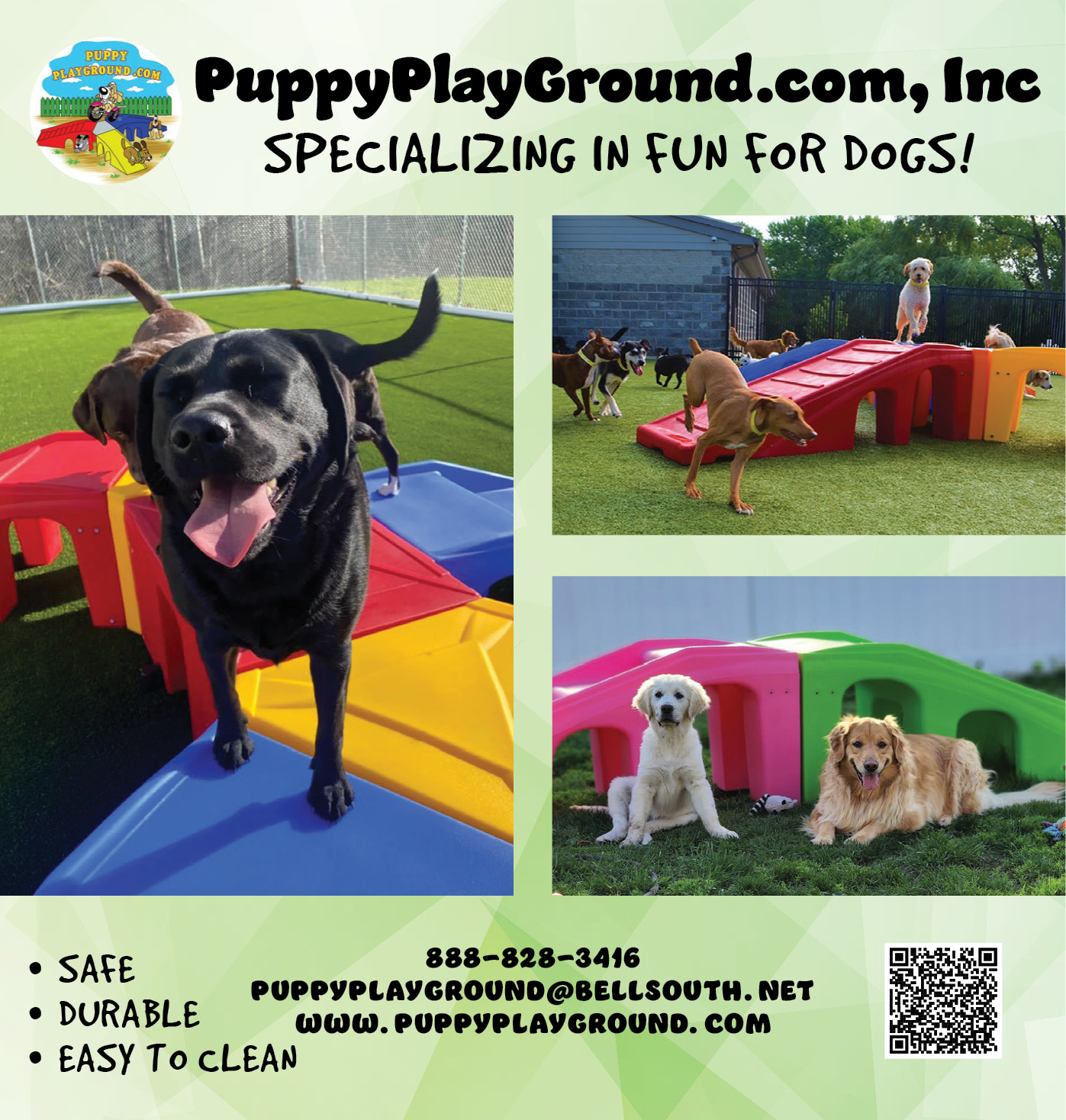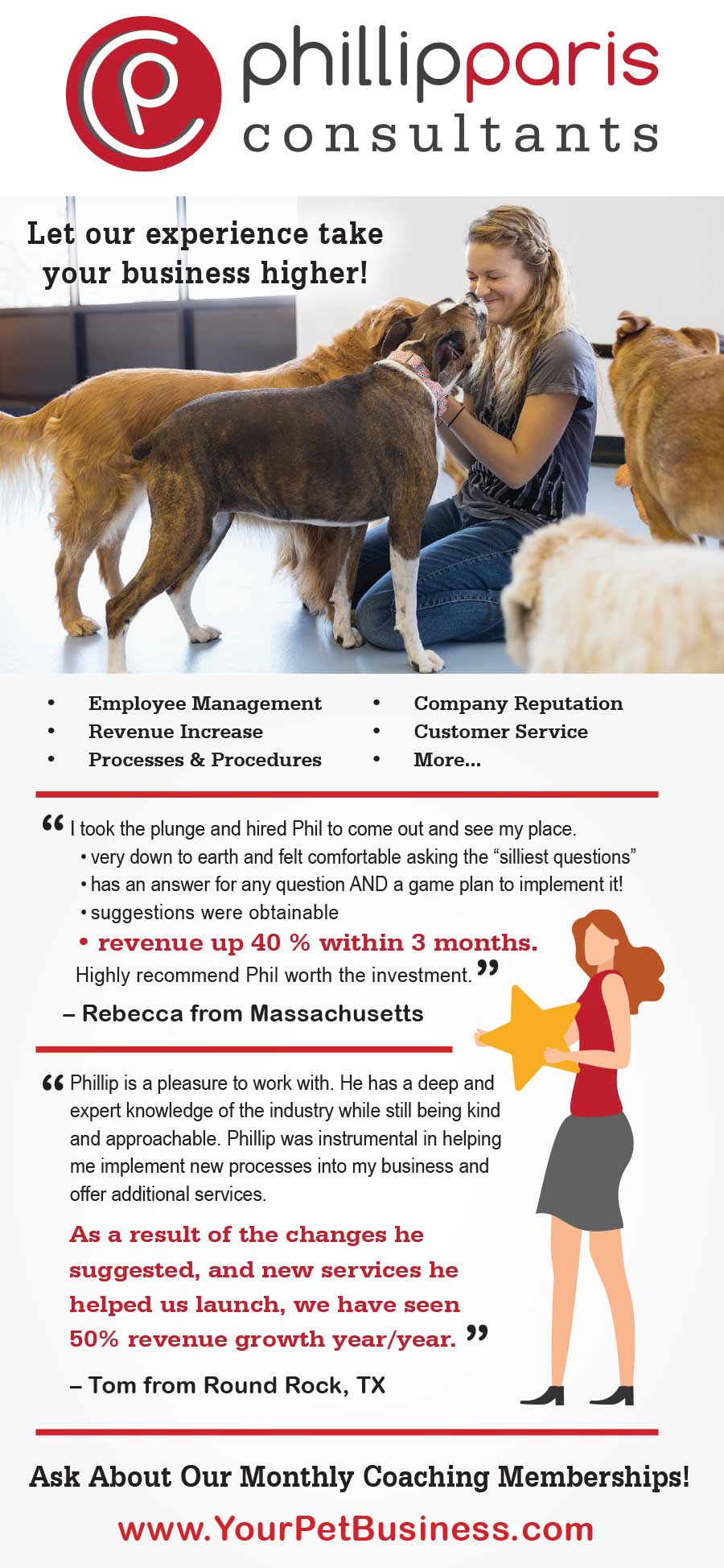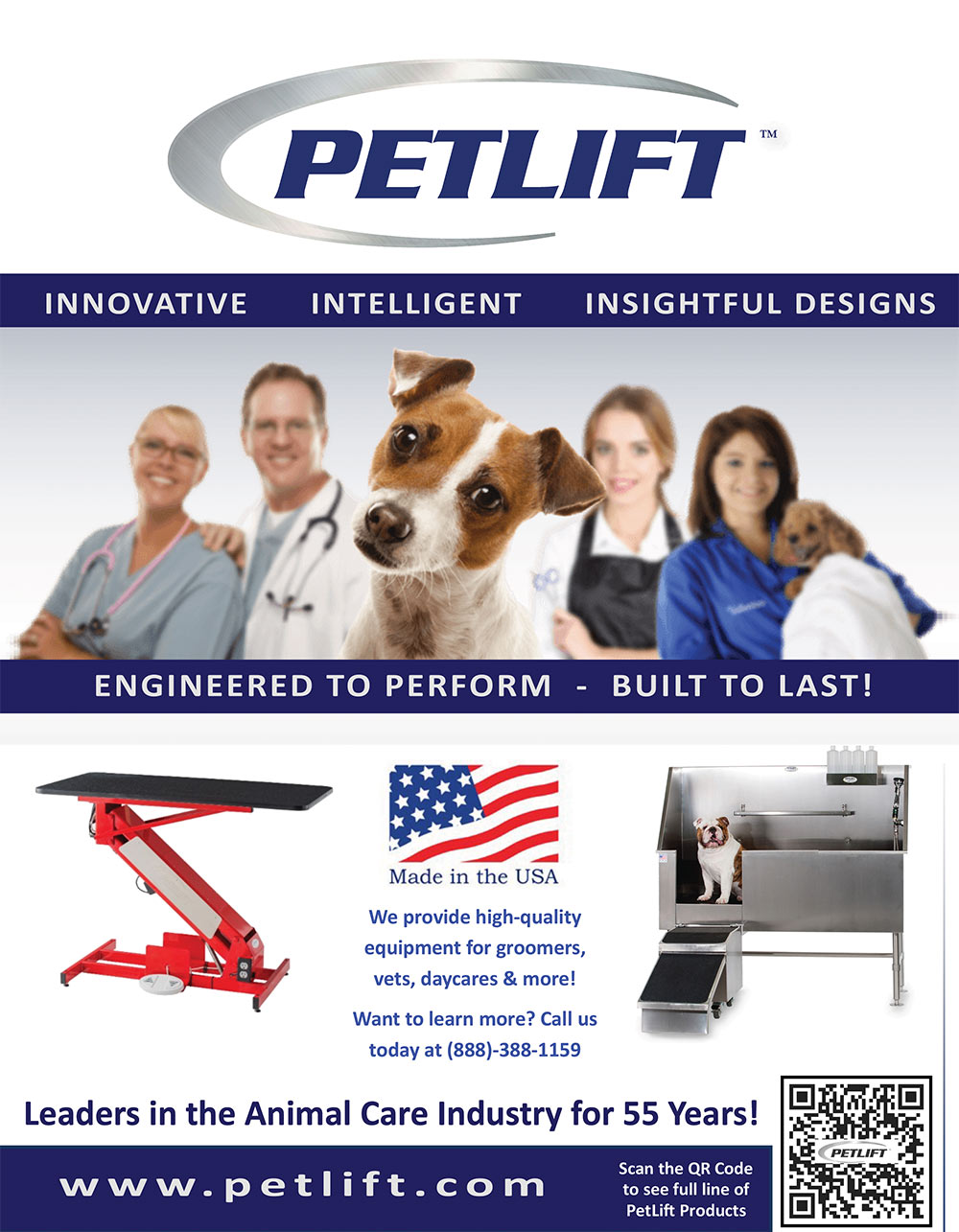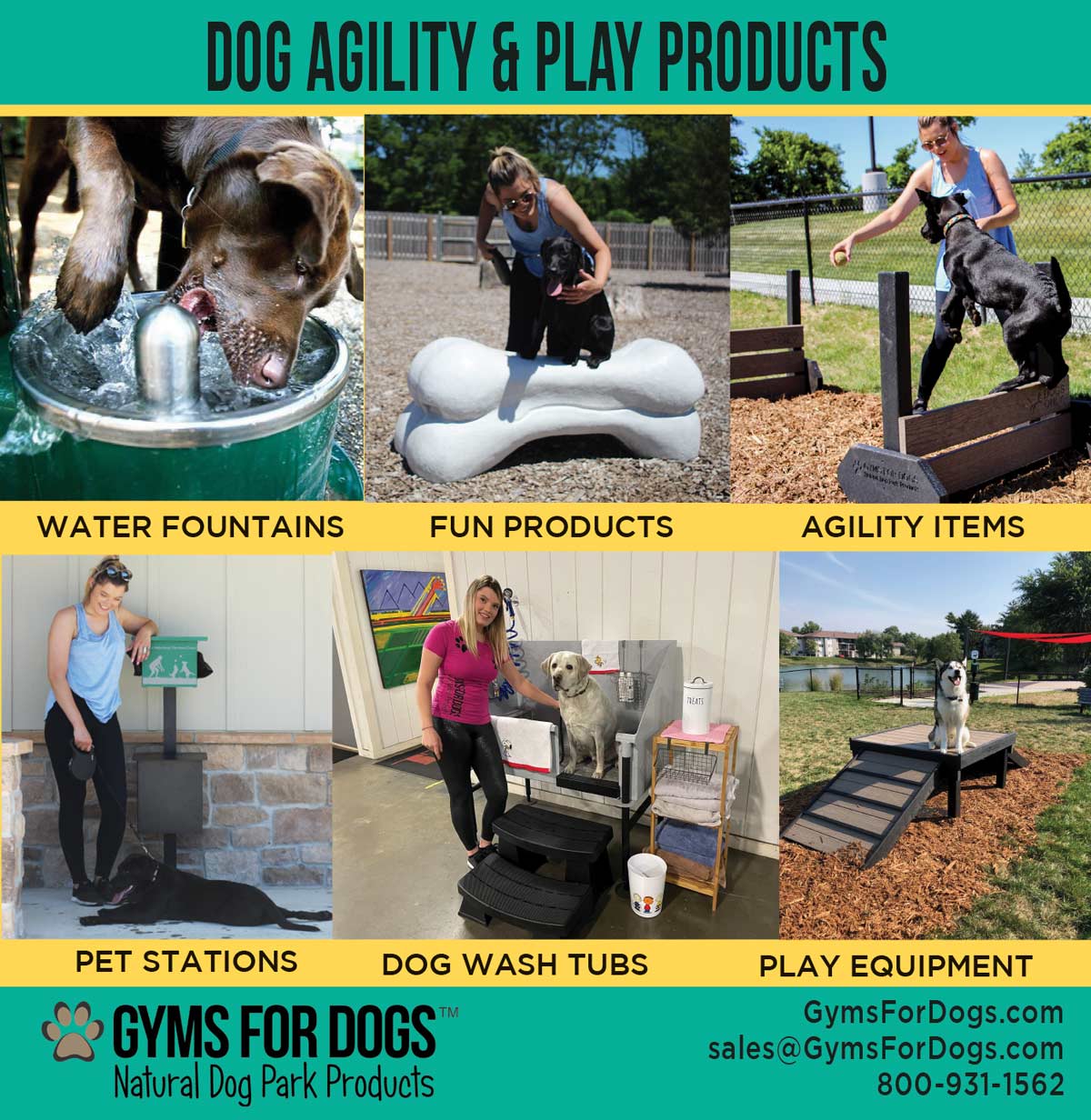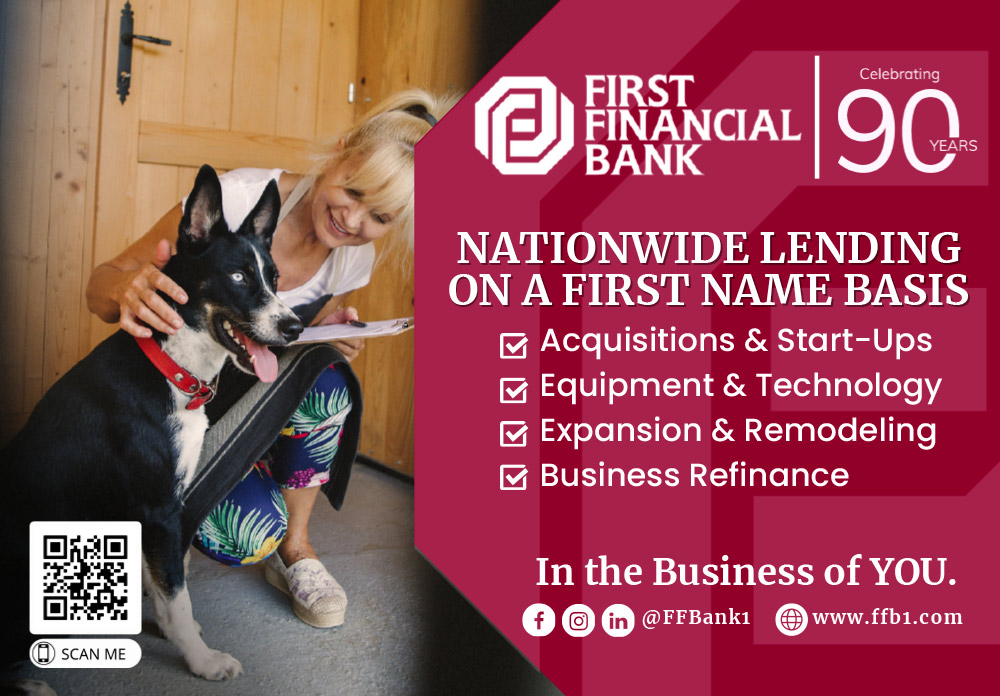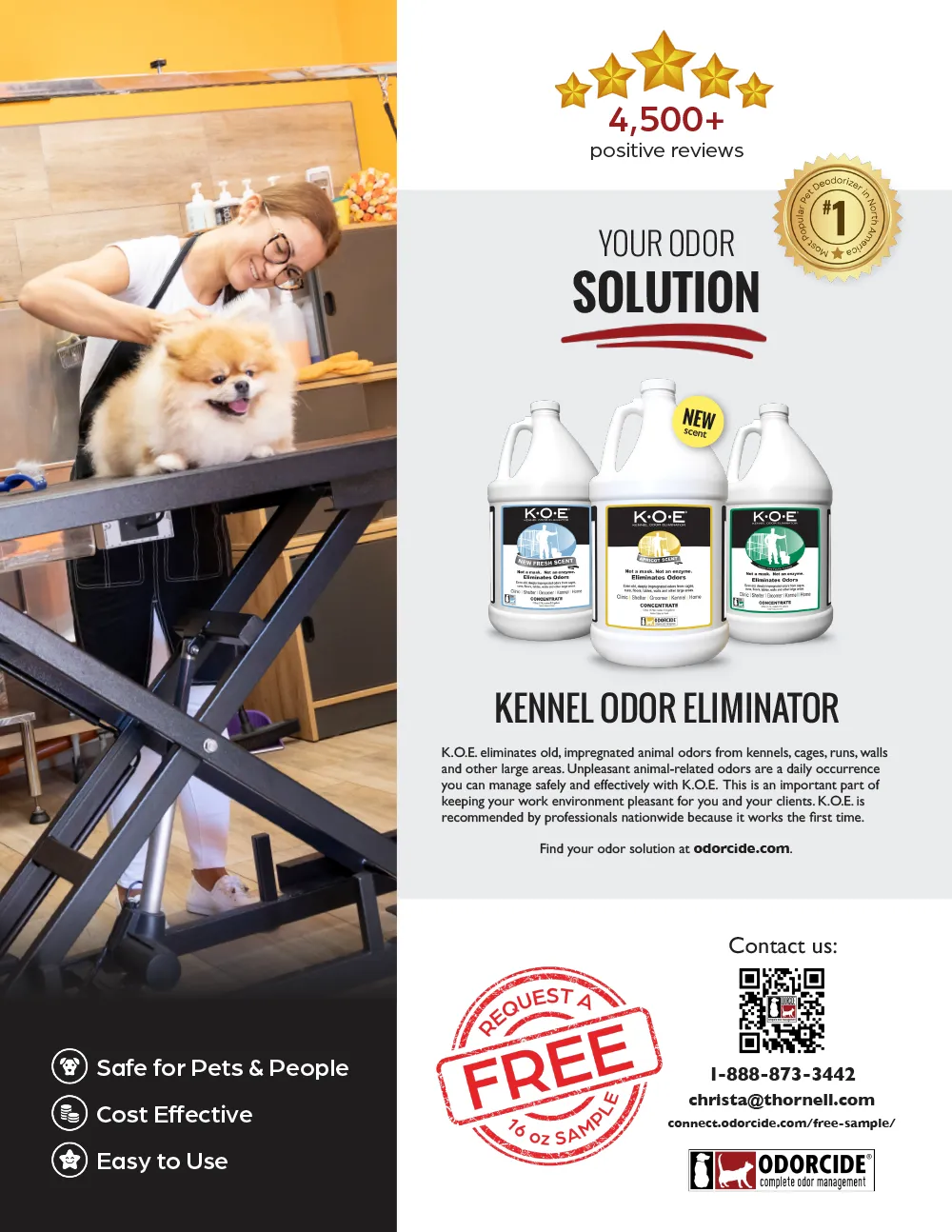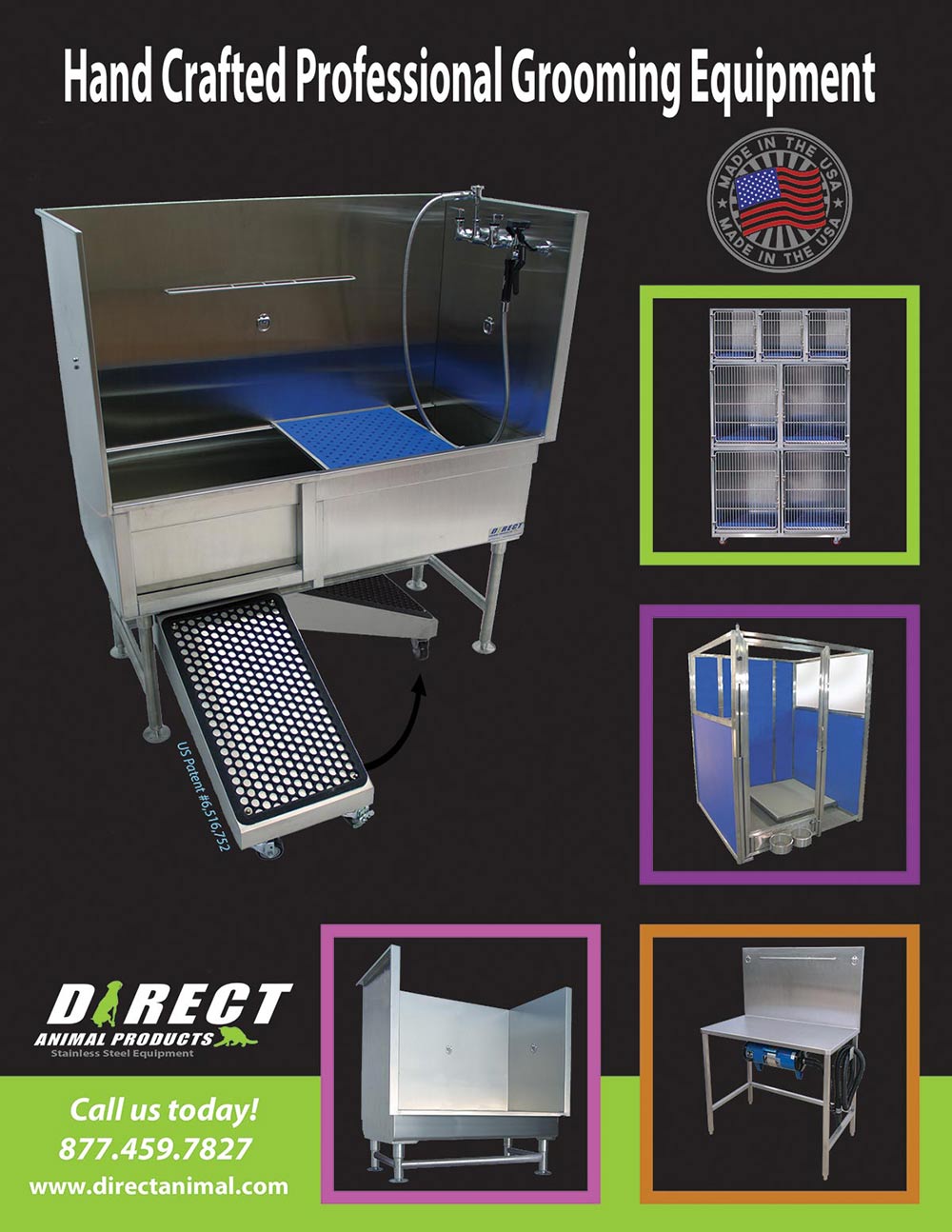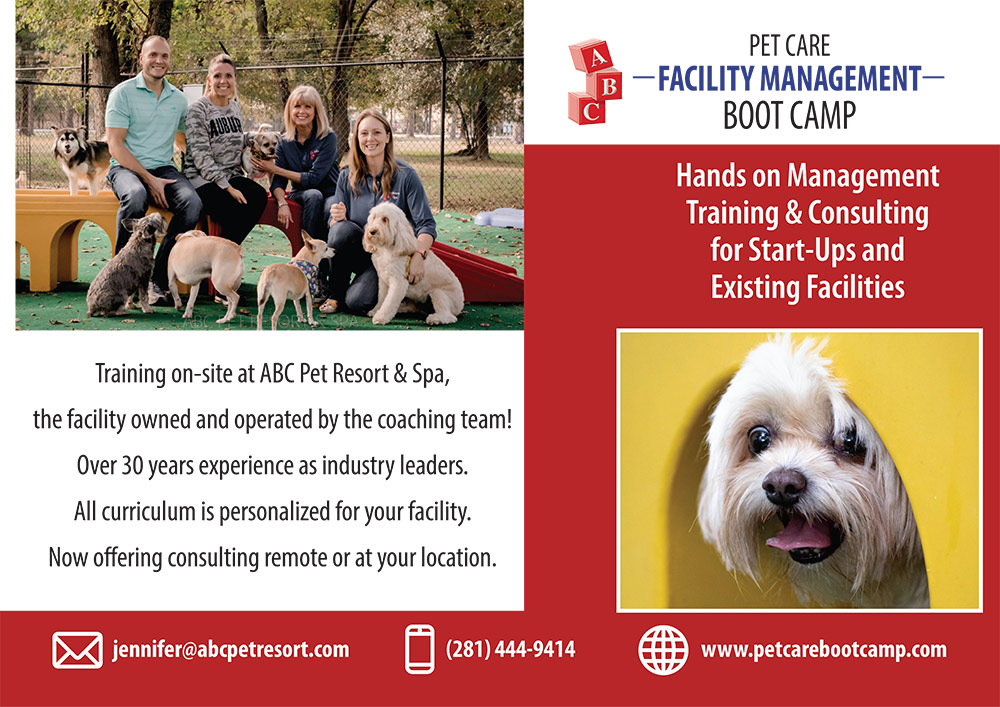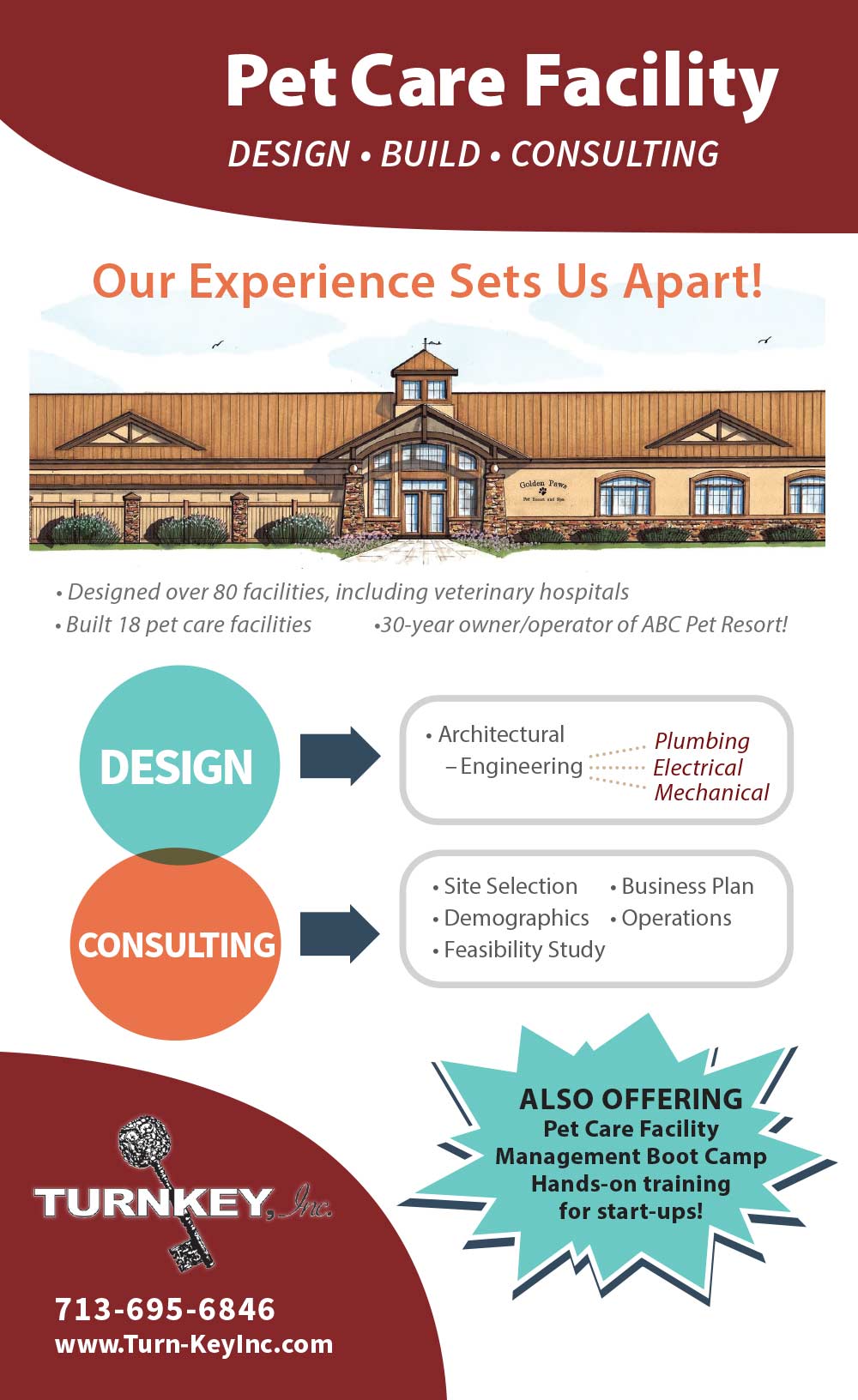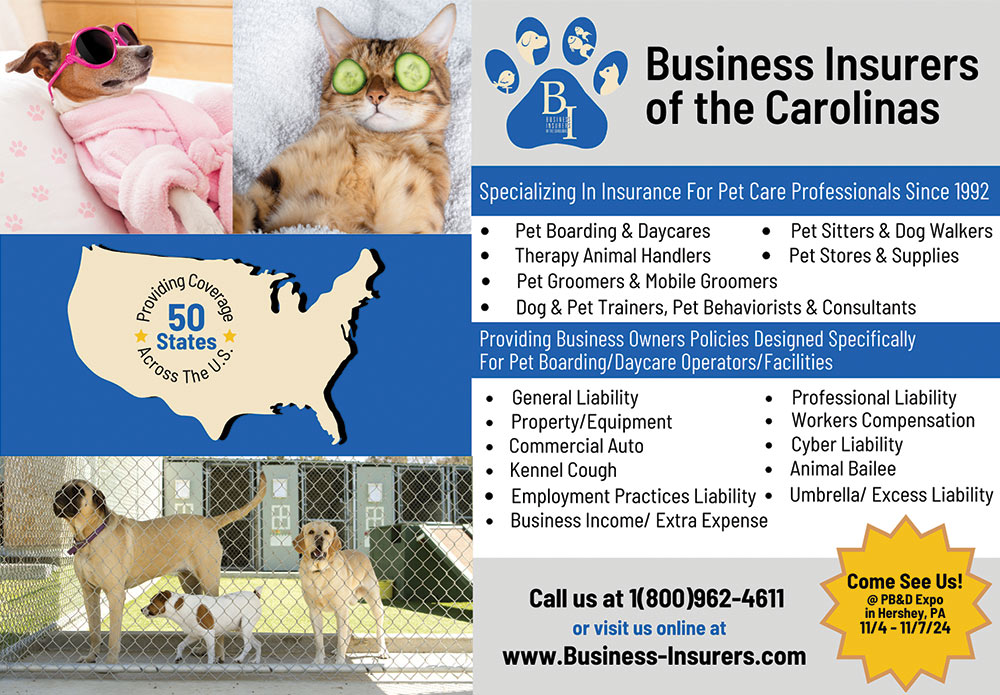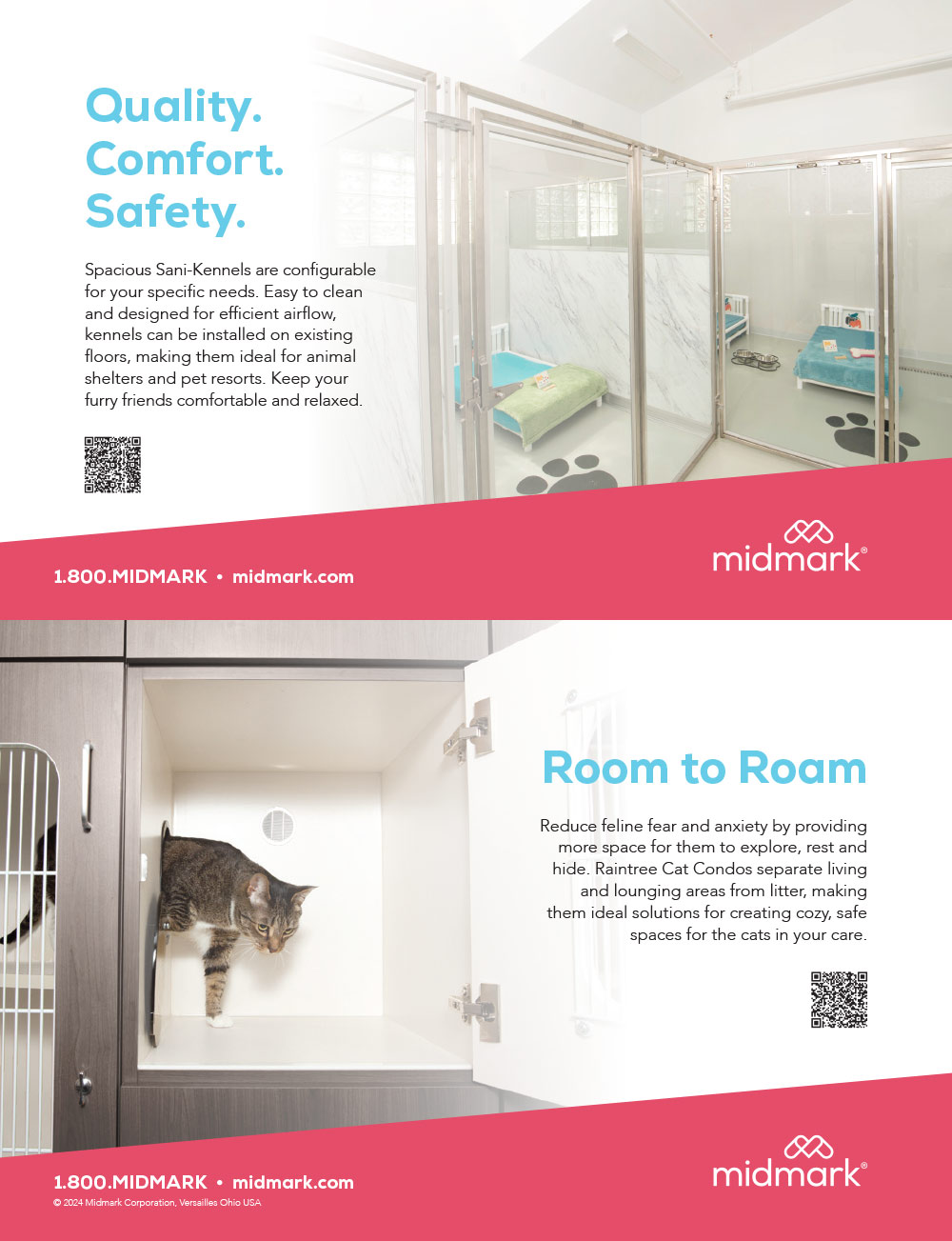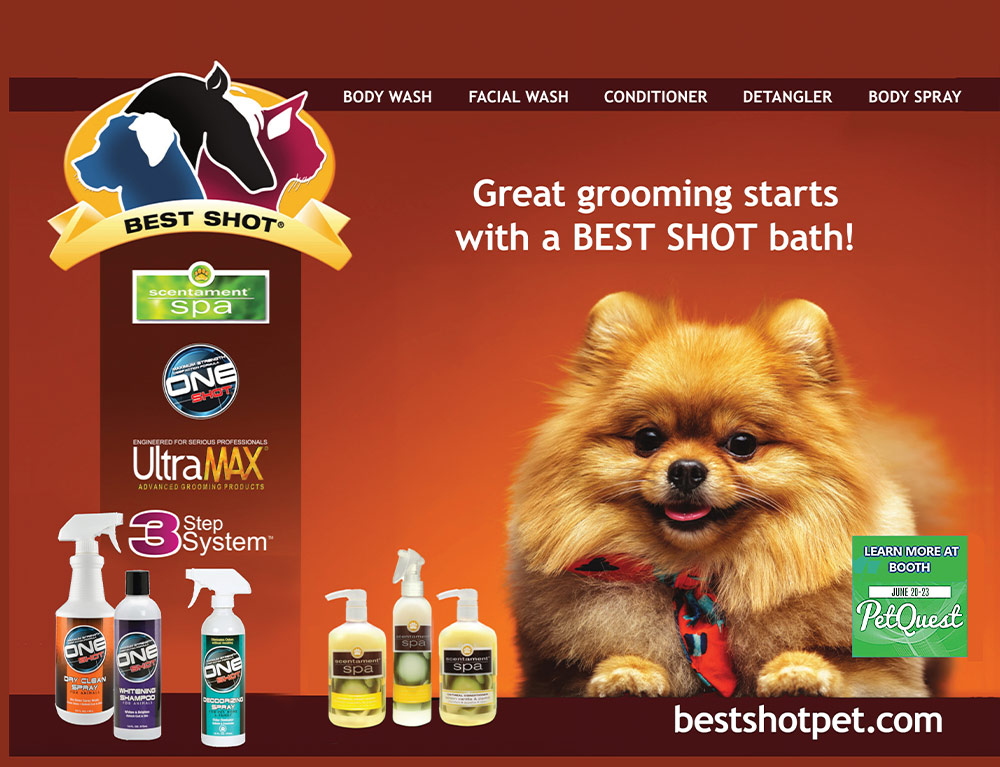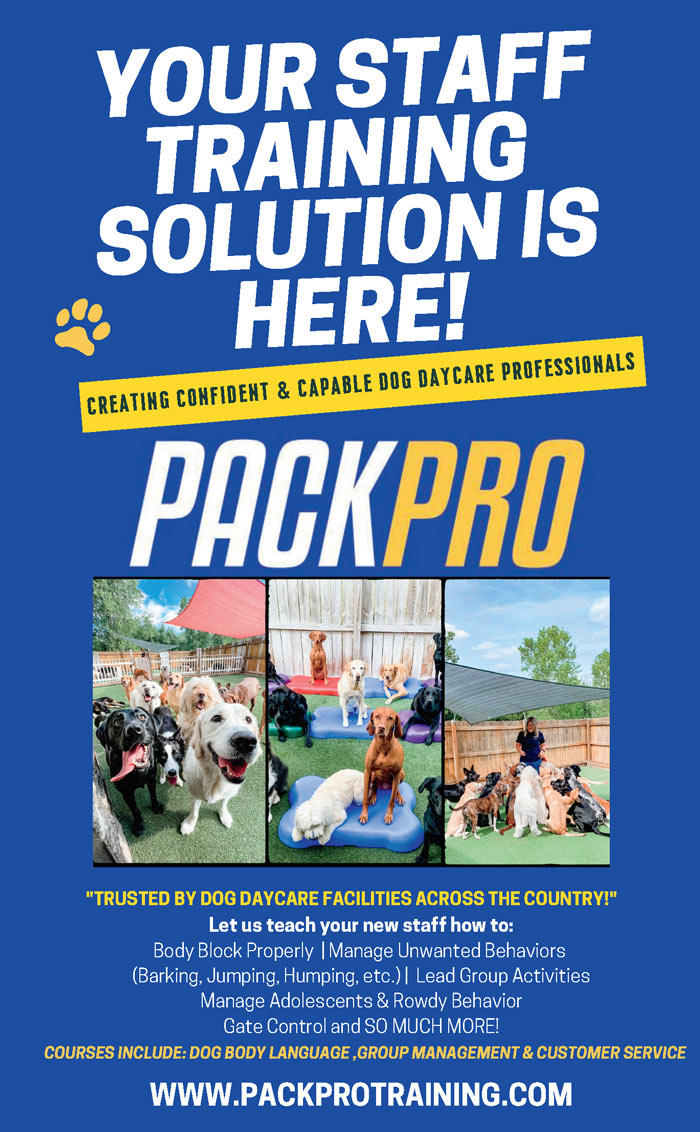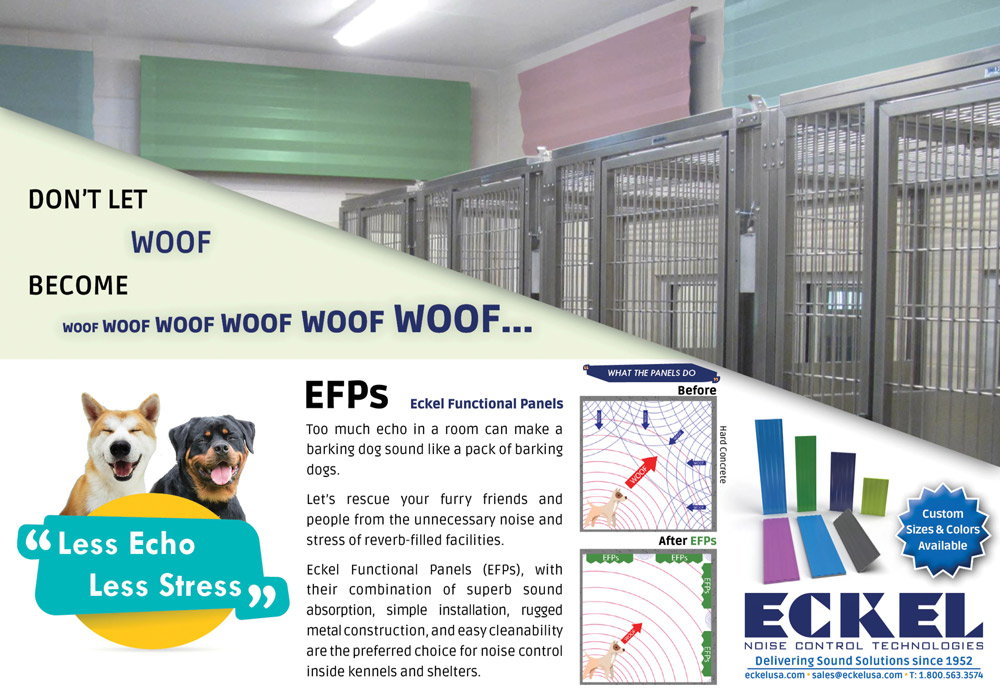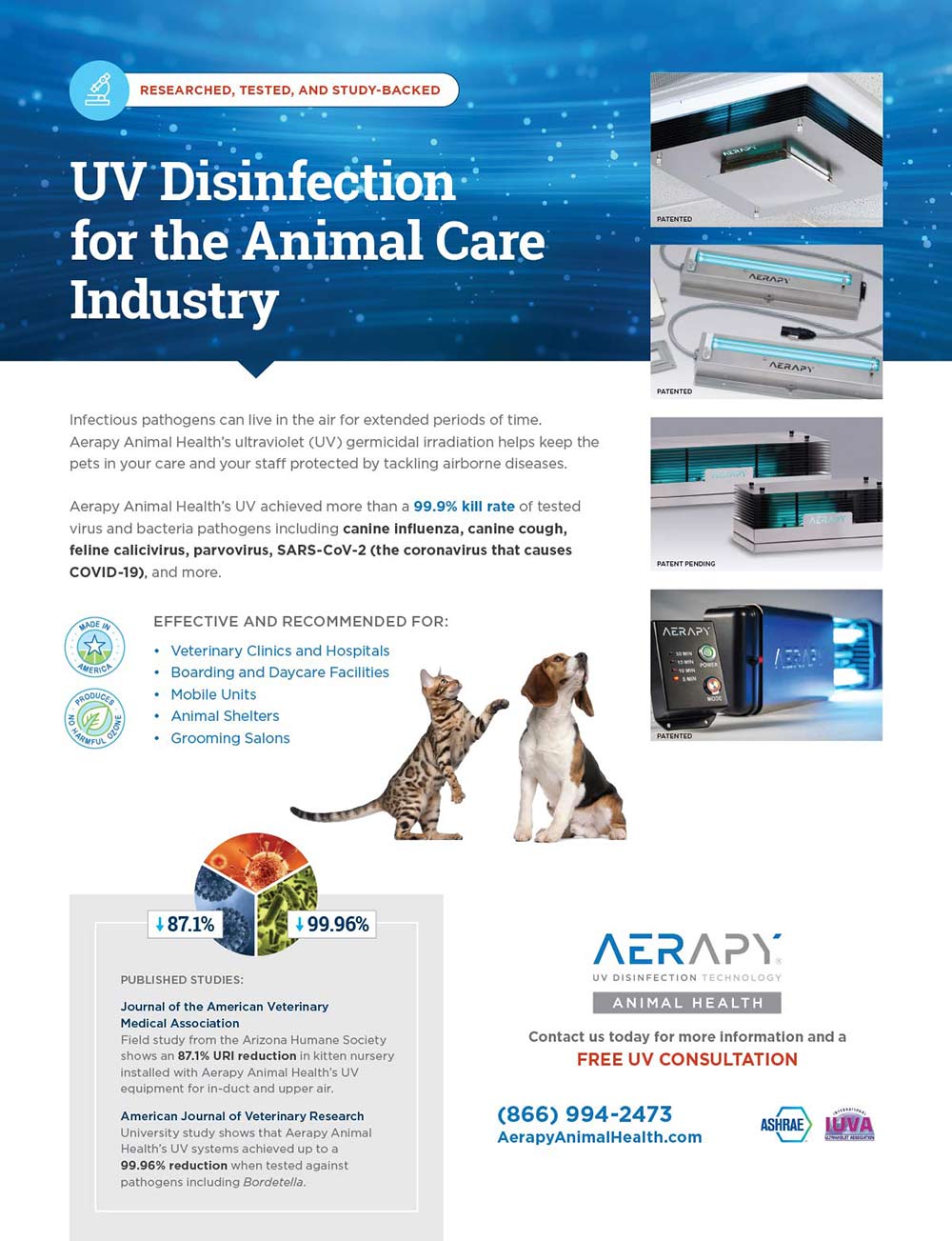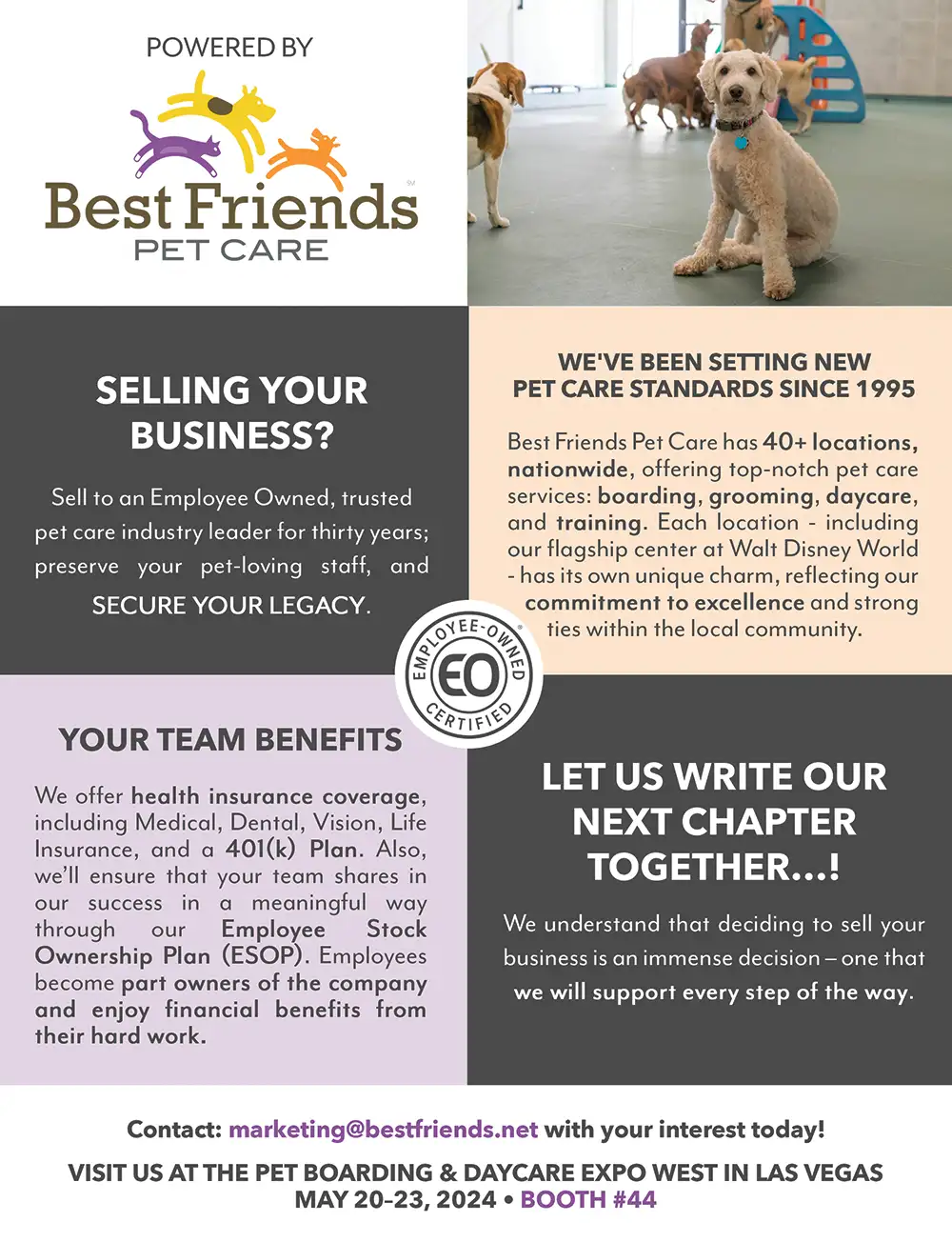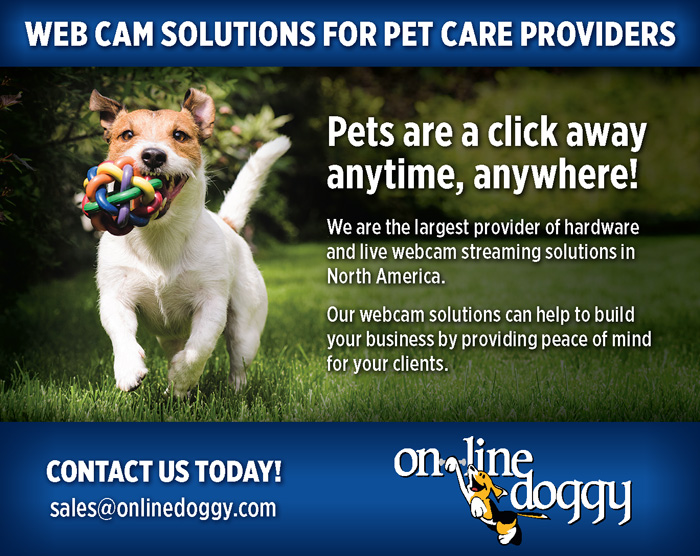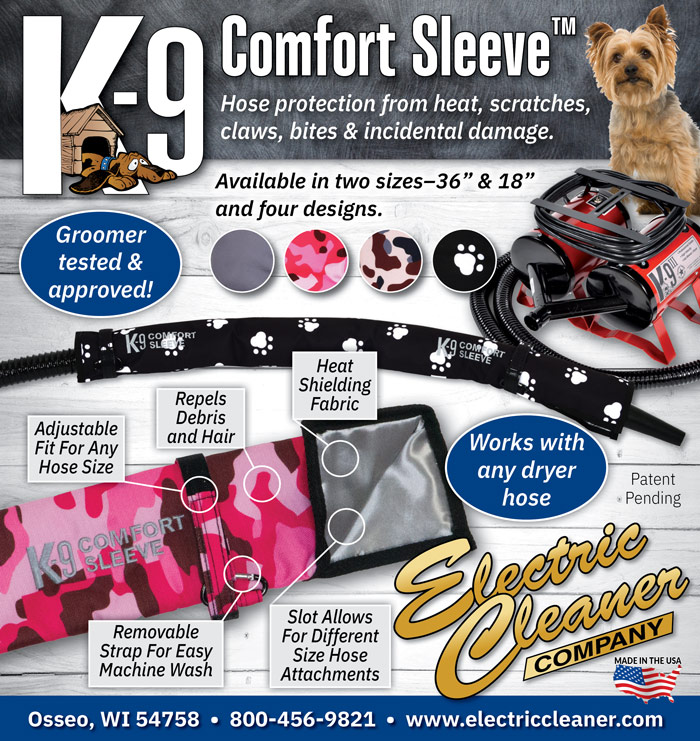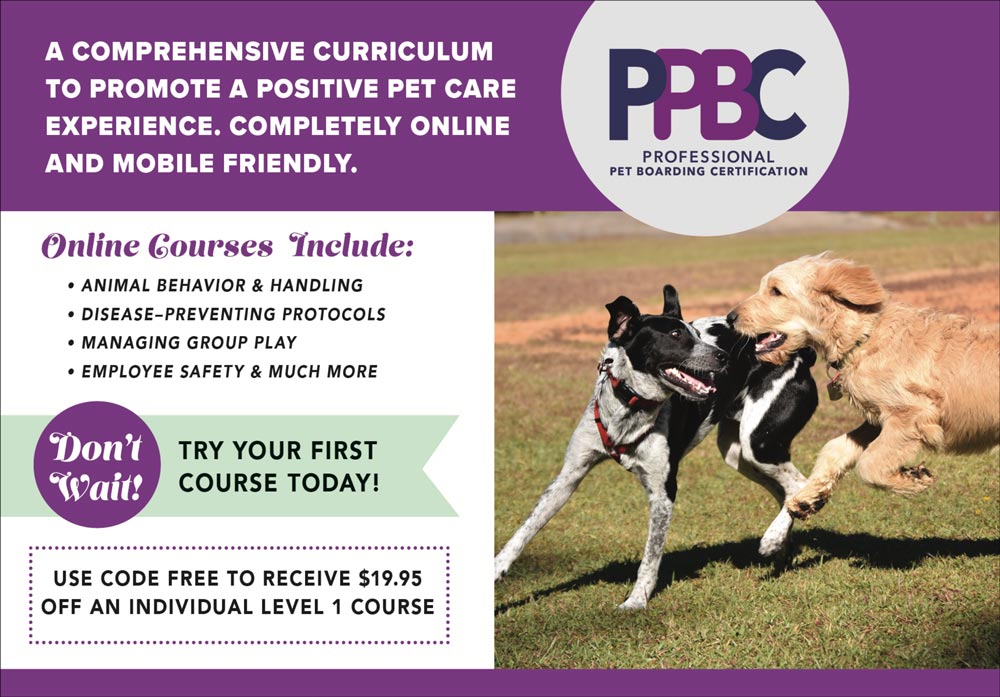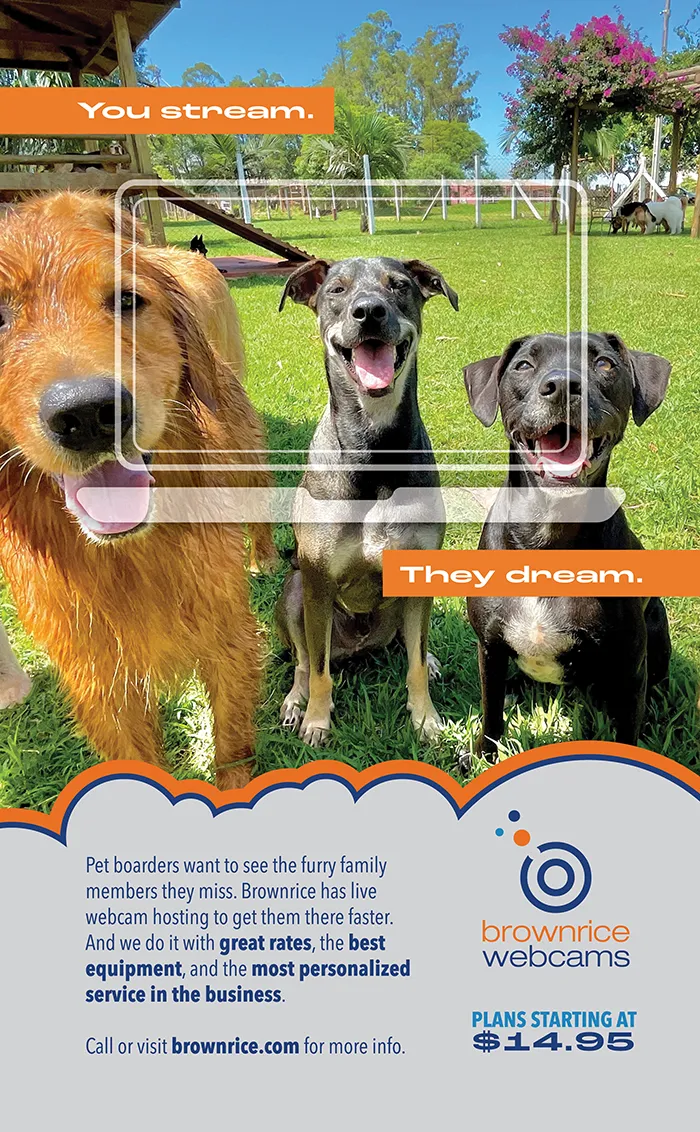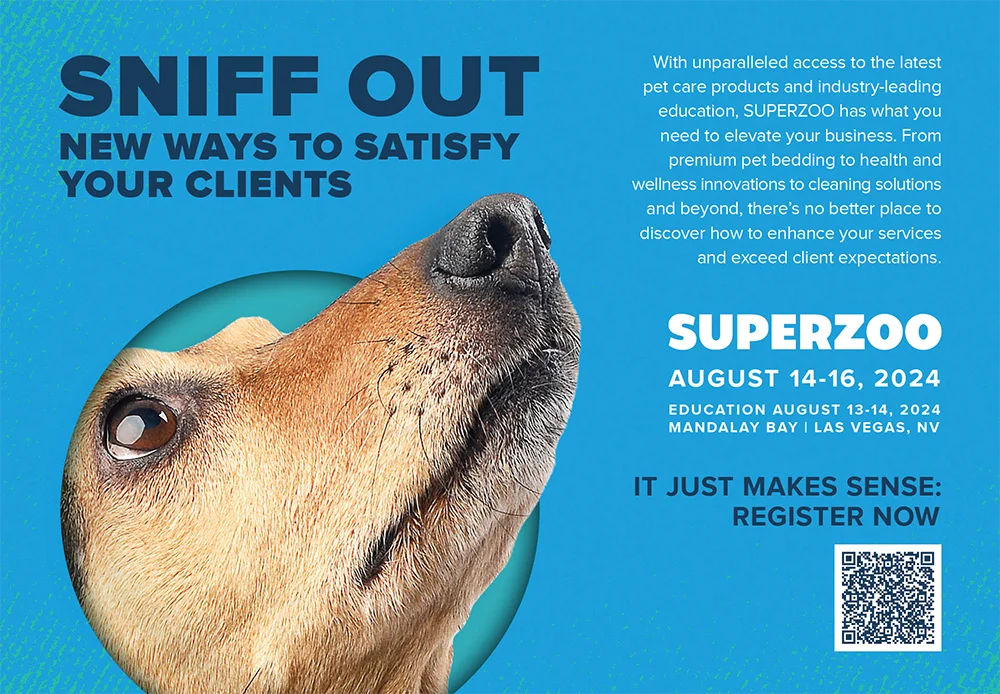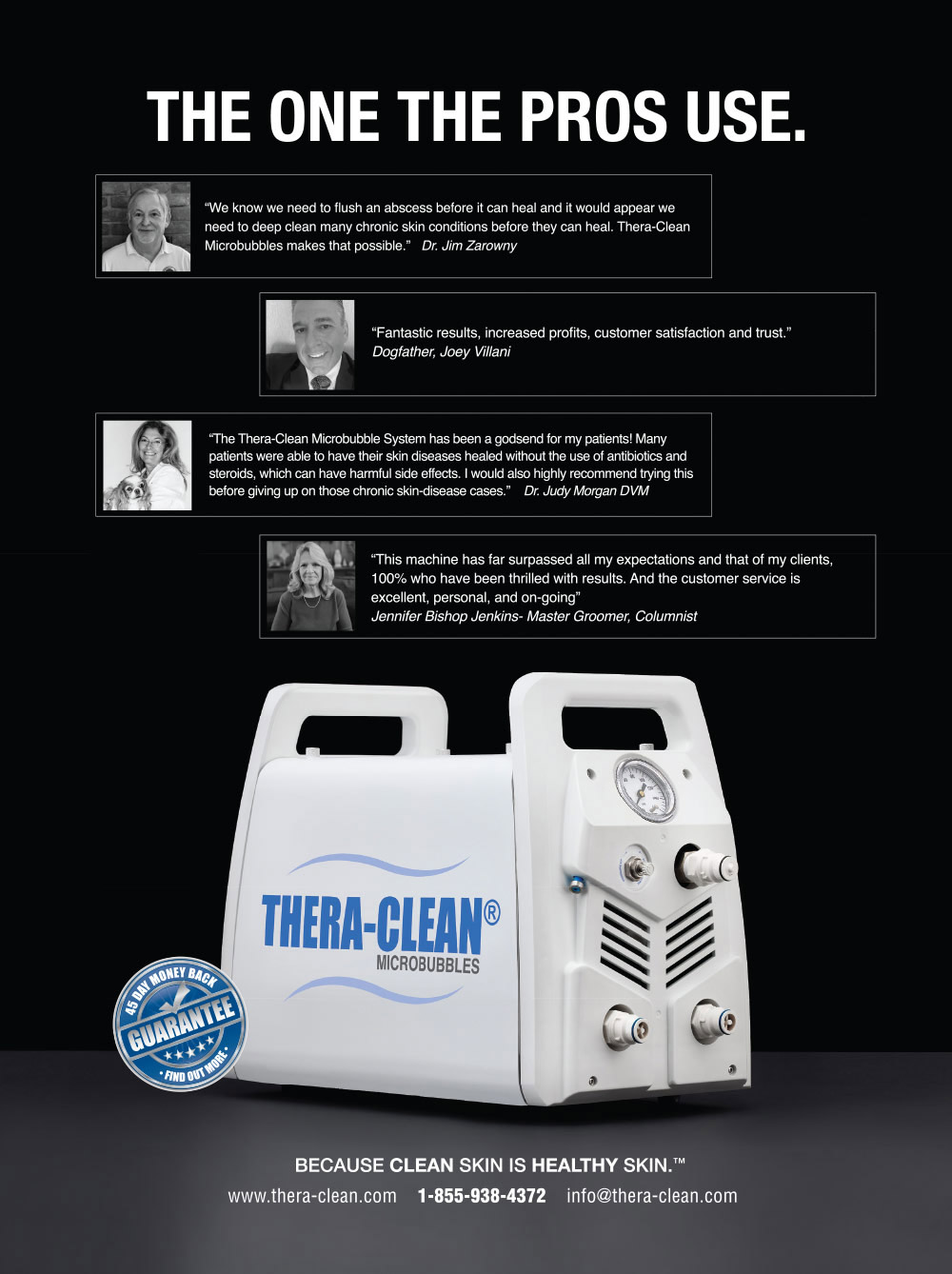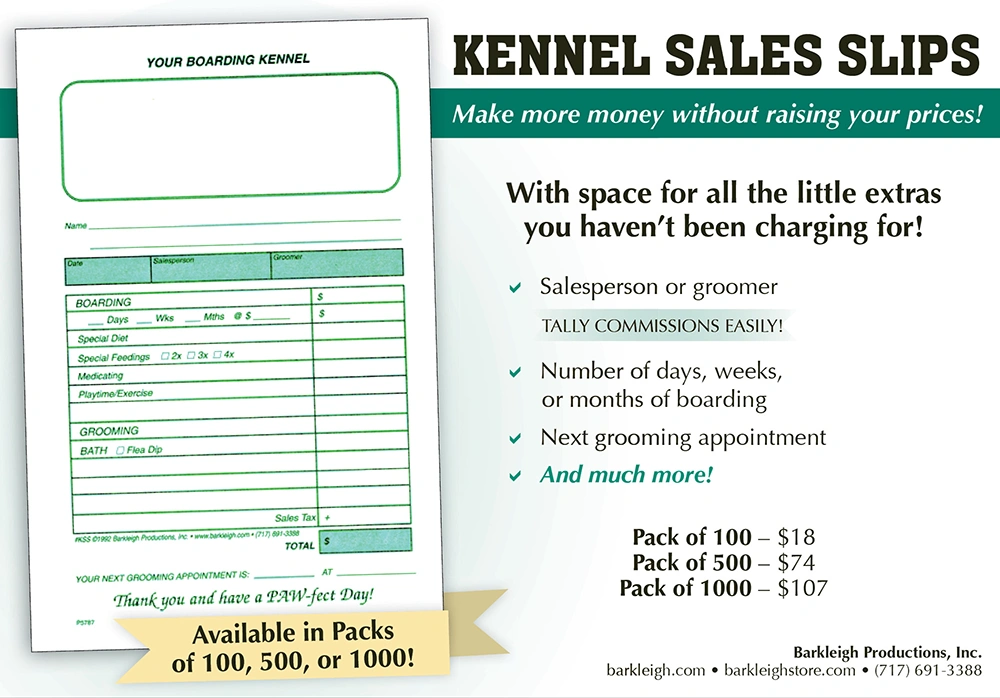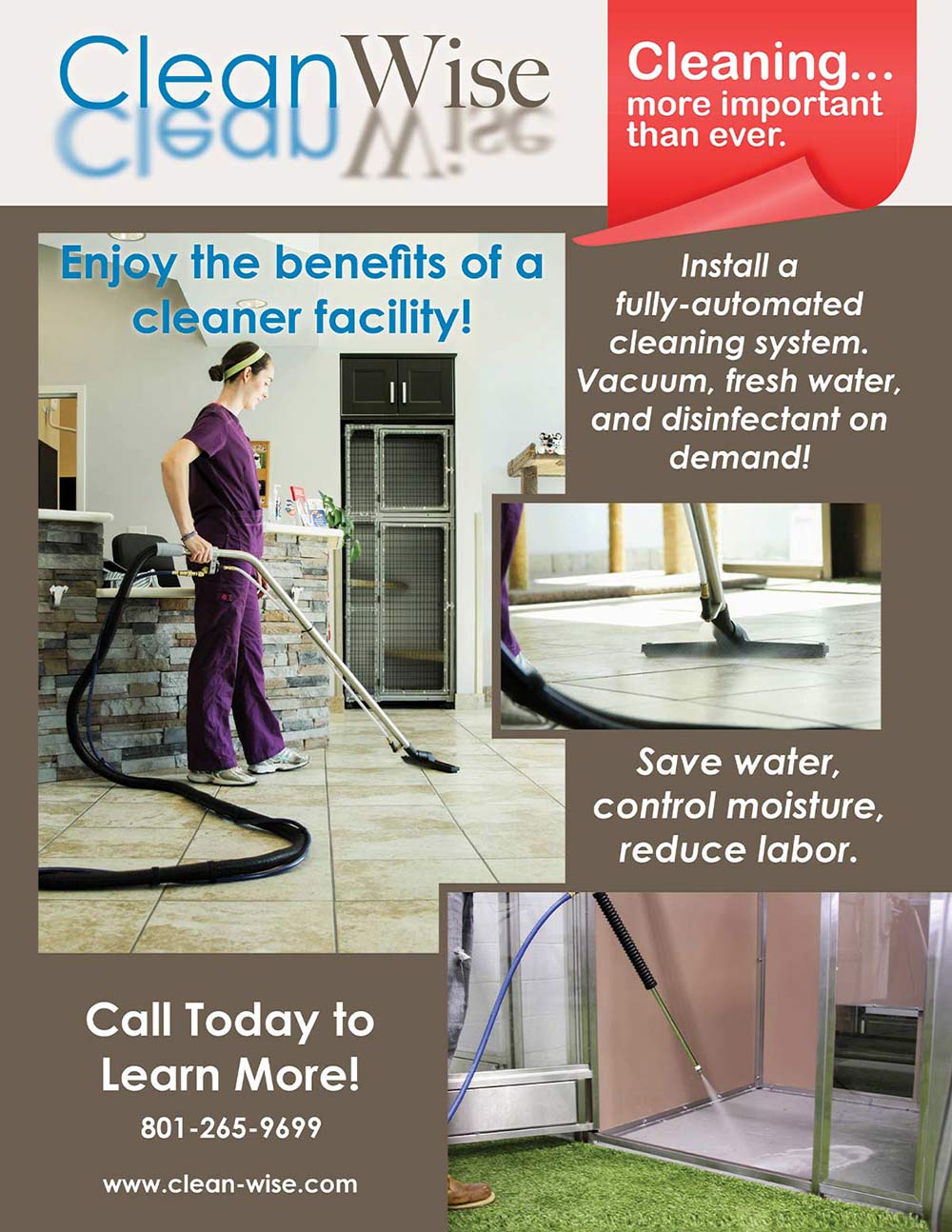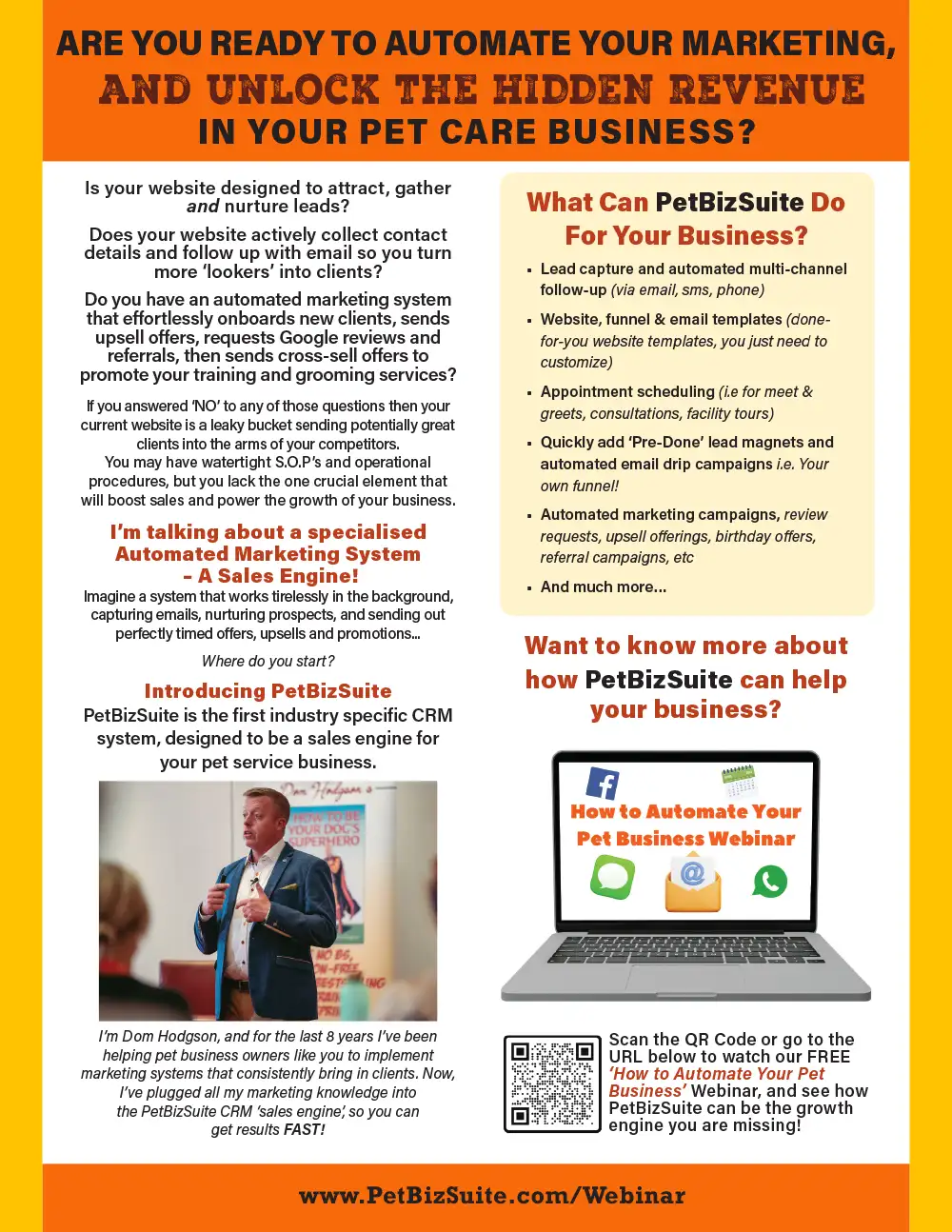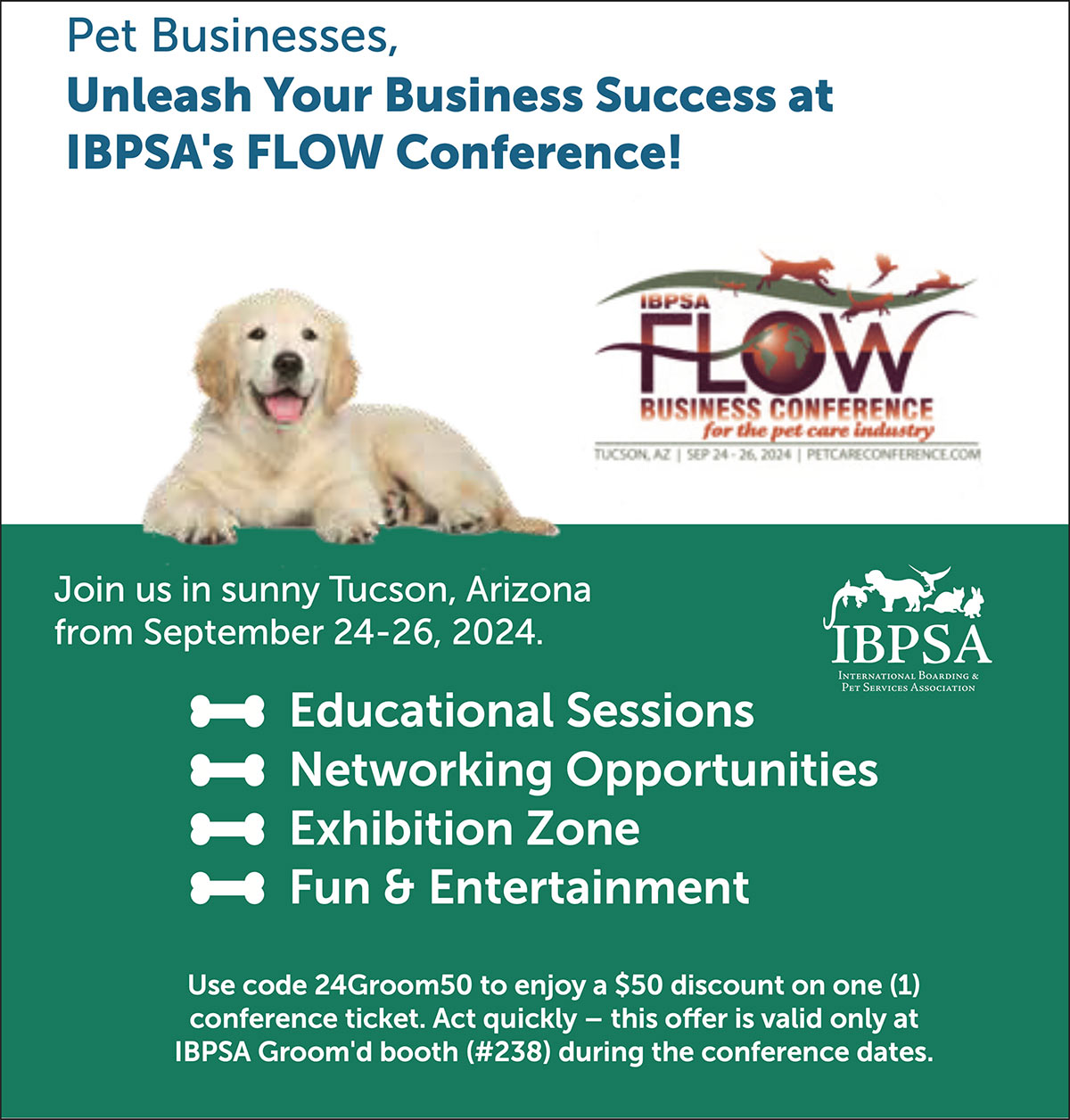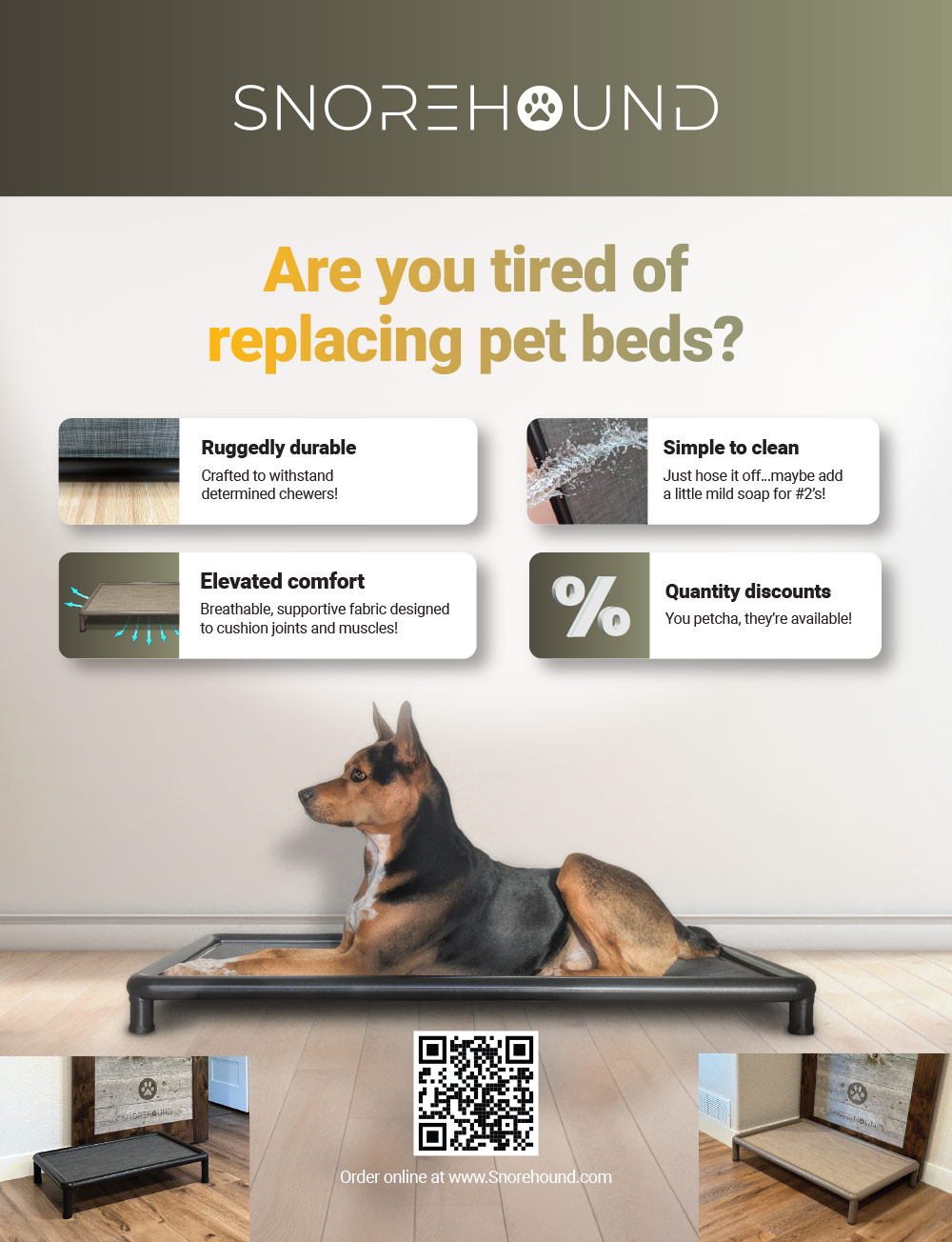Staff
Barkleigh Productions, Inc.
Rebecca Shipman
Laura Pennington
Brandi Aurelio
Carlee Kubistek
Luke Dumberth
Todd Shelly
Gwen Shelly
Adam Lohr
James Severs
Karin Grottola
Cassidy Ryman
Evan Gummo
CONTACT
General: (717) 691-3388
Editorial: rebecca@barkleigh.com
Advertising: james@barkleigh.com

Animal Behavior
Business
Animal Health
Industry News
- Aerapy Animal Health41
- Alpha Tech Pet25
- Barkleigh Store – Holistic Pet Grooming51
- Barkleigh Store – Kennel Sales Slips54
- Barkleigh Store – Rosetta Bone39
- Barkleigh Store – Social Media Release Forms37
- Best Friends Pet Care43
- Best Shot Pet35
- BioOx16
- Brownrice Webcams51
- Business Insurers of the Carolinas34
- CleanWise57
- Destination Pet9
- Direct Animal Products23
- Dog Kennel Flooring50
- Easy2Buy USA13
- Eckel42
- Electric Cleaner Company47
- First Financial Bank19
- Governor Insurance Agency21
- Gyms For Dogs18
- Health Technology48
- Health Technology64
- IBPSA60
- K9Grass by ForeverLawn2
- Kuranda Pro3
- Live Oak Bank36
- Midmark33
- Natura Turf Pro53
- Online Doggy46
- Outstanding Pet Care27
- Pack Pro Training40
- Paragon Pet School10
- Pet Biz Insurance31
- Pet Biz Suite59
- Pet Care Bootcamp28
- Pet Shield24
- Pet Vet Sales15
- PetLift7
- Phillip Paris Consultants12
- Presidio Custom Kennels22
- Professional Pet Boarding Certification49
- Puppy Playground11
- Rescue Disinfectants5
- Snorehound63
- Snyder MFG.29
- Stone Mountain Pet Products8
- Superzoo58
- Thera-Clean55
- Thornell OdorcideDigital
- Turnkey Inc.30
Animal Behavior

By Chrissy Capacchione
Photos provided by Chrissy Capacchione
Reactivity and aggression can be standard communication for dogs. However, when such displays are directed towards humans or other dogs in a daycare setting or during boarding, this is both undesirable and problematic behavior. Pet care facility owners and employees must be prepared to manage these behaviors in a safe and effective way. Through training, practice and everyday situations, handlers can gain experience and develop necessary skills to successfully work with and care for dogs of all types.
Understanding Reactivity and Aggression

- Prey Drive
- Territory
- Fear
- Anxiety
- Frustration
- Dominance
- Maternal
- Disease/Illness/Pain
- Leash Aggression
- Trauma
- Behavioral Problems
- Resource Guarding
- Territorial: This would be directed towards someone or something that enters or approaches the area which the dog considers their territory, such as their owner’s property or even their enclosure at a boarding facility.
- Possessiveness/Resource Guarding: This behavior is directed towards a person, dog or other animal that causes the dog to feel threatened by the removal of valued articles, such as food or toys.
- Pain-Related: This would be behavior directed towards someone or something due to the dog being in discomfort or pain.
- Predatory: This behavior is normally towards another animal the dog views as prey; however, a dog can demonstrate this behavior towards a person. The goal of predatory behavior is to capture, kill and devour the object of prey.
- Redirection: This is secondary behavior resulting from another source of reactivity or aggression that heightens arousal, which can be caused by any source. When the dog is unable to reach the original source causing its arousal, they become frustrated and their focus shifts to another object, person or animal. They will then redirect their reactive or aggressive behavior to their new focus.
- Fear/Anxiety: This presents when a dog feels nervous or afraid, causing the dog to be concerned about the potential of experiencing an uncertain or unpleasant outcome and wanting to distance itself from the stimulus, which can result in the display of aggressive or reactive behavior.
Safely and effectively handling reactive or aggressive behavior begins through recognizing and being alert to its warning signs. Behaviors and body language to look out for include avoiding eye contact with the perceived threat, lip-licking, flattening of ears, crouching, tail-tucking, stiffening of the body, freezing, growling, snapping and, finally, biting.
It may be helpful to ask potential clients to fill out a questionnaire in order to divulge any pertinent information about their pet’s past history before scheduling an evaluation in person. It is especially important to discuss if the owner is aware of any past or present behavioral problems their dog may struggle with.
During an intake evaluation, introduce the new dog to others that are calm and interactive. Observe their reactions when engaging with new dogs. Do they seem relaxed and happy interacting with new peers right away, or do they appear a bit unsure at first but soon settle into the routine? Or, do they become reactive and begin showing warning signs pointing to the likelihood of aggressive behavior?
The conclusion of the evaluation may include introducing toys and food to check for resource-guarding behaviors. Recording the outcome of the evaluation and personality traits will alert staff to any potential risks or situations to avoid while also assisting in placing them in the most appropriate playgroups. Creating a play group of dogs whose personalities complement one another not only reduces the potential of incident risks but also gives them the best opportunity for a fun-filled experience.
Conduct the evaluation away from the dog’s owner. If the dog becomes aggressive or displays dangerous behavior when separated from the owner or during any other part of the evaluation, immediately stop the process. Respectfully and clearly inform the owner about the outcome of the evaluation and any reasons why their dog is not a good fit for your facility. While this may not be the answer they want to hear, it is unacceptable to knowingly risk the wellbeing of other clients’ dogs and the safety of employees.

Fig 2) If faced with a dog redirecting its behavior towards a handler, thandler can place both hands on the slip lead and push outwards from their torso while moving their body in the opposite direction of their hands. This will create space between the handler and the dog.
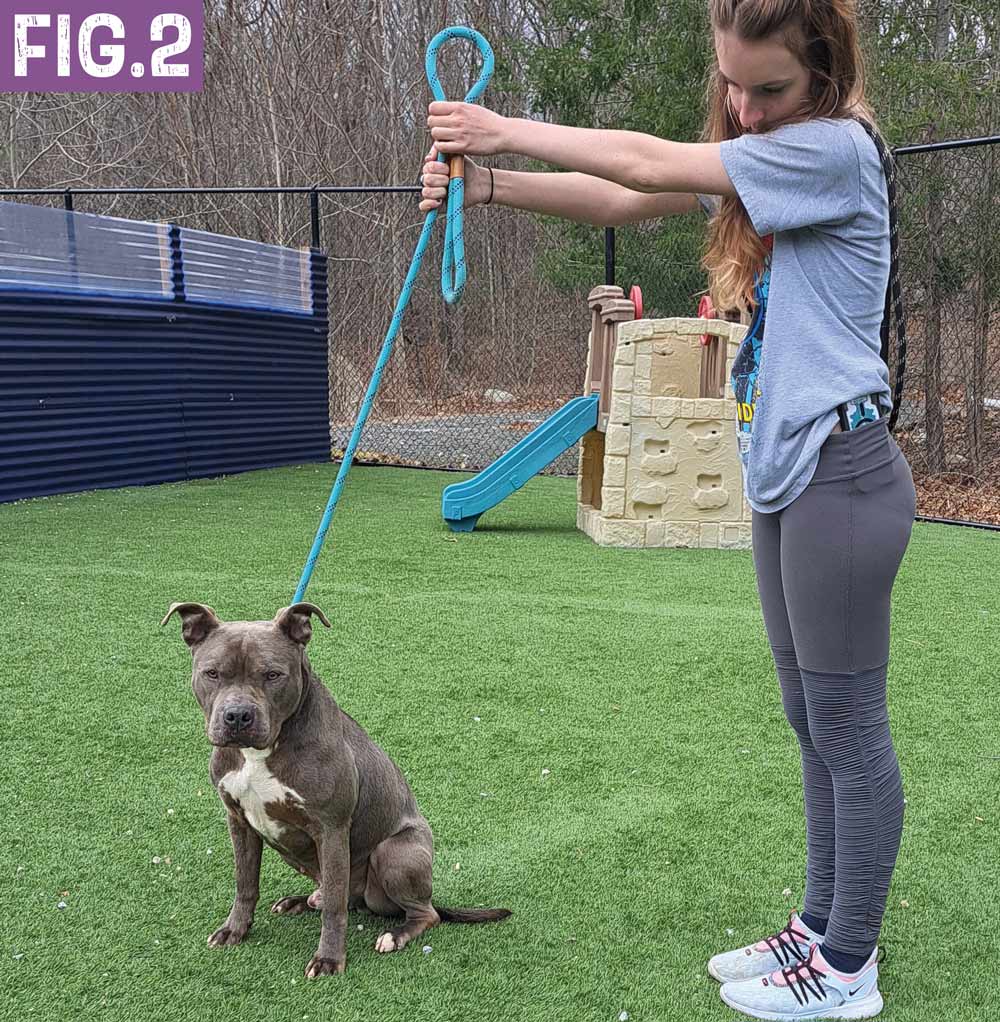
- Aggression. ASPCA. https://www.aspca.org/pet-care/dog-care/common-dog-behavior-issues/aggression
- Martin, DVM, Diplomate, ACVB, K., & Buzhardt, DVM, L. Aggression in dogs. VCA Animal Hospitals. https://vcahospitals.com/know-your-pet/fear-vs-aggression
- Reinecker, D. (2014, June 26). Redirected dog aggression explained in simple terms. David Reinecker | Dog Trainer and Behavior expert. https://davidreinecker.com/dog-aggression/redirected-dog-aggression-explained-in-simple-terms
- RP, T. (2020, July 8). Dog temperament tests: Best practices for daycares. Revelation Pets. https://www.revelationpets.com/blog/dog-temperament-tests
- Gibeault, MsC, CPDT, S. (2024, February 21). Dog Reactivity: Understanding the difference between reactivity and aggression. American Kennel Club. https://www.akc.org/expert-advice/training/reactivity-vs-aggression/
Business

By Dominic Hodgson
 hen Disney imagineers begin designing a new park attraction, they use a process called “Blue Sky Speculation.” Blue Sky Speculation forces them to start with a simple question: If I was _______, what would I do?
hen Disney imagineers begin designing a new park attraction, they use a process called “Blue Sky Speculation.” Blue Sky Speculation forces them to start with a simple question: If I was _______, what would I do?
For example, If I was a pirate, what would I do? Where would I go? Who would I encounter? What items would a pirate buy, and what food would they eat?
Then, rather than just sticking up a simple shuggy pirate ship (which is what most theme parks would do), this deeper process enables the imagineers to build an experience from the ground up. Consequently, it’s only Disney who are able to create truly immersive, memorable experiences that fulfil all our innate aspirations.
This Blue Sky Speculation exercise can also be useful to help a pet care business owner design new and exciting services. So, when it comes to your daycare or boarding services, you could ask yourself, If I was a dog, what would I want to do? What would I want to sniff? Who would I want to play with? What would I want to eat? Essentially, what would a dream doggy daycare experience look like for a dog, and the owner?
The trick here is to start with a blank piece of paper and try to discount everything you do already—and what everyone else is doing. Let your imagination run wild and dream big about what an ideal doggy daycare experience could look like.
You can also use this same Blue Sky Speculation technique to design a better pet business model. Because when it comes to delivering maximum, lasting, sustainable success in your business, the model you choose matters, a lot.
There is a “Fremium” model, where you offer a free, limited version of your service (such as a free day of daycare), which then encourages people to upgrade to take your full, paid offering. These are commonly associated with software and digital services like Spotify, Dropbox or TV services, but they can be used for actual pet services, too.
Then we have “Recurring Revenue” models, like gym memberships, cleaning services or subscriptions such as magazines and dog toy/treat boxes. These are great because you only need to make one sale that brings in steady, predictable income—and it builds a loyal customer base that appreciates the consistent value they receive.
One of the most desirable business models is a “Sunk-Cost Recurring Revenue” model. This would be something like Gillette razors, where people sink an upfront cost into the product (in this case, the handle), then they have to spend money on a recurring basis to get new blades. Another good example would be a country club, where you pay a fee to join, then you pay a monthly fee to be able to use the facilities.
My ideal model for a pet care business—and one I think Disney imagineers would recommend—is the Sunk-Cost Recurring Revenue model. This is also the best way to introduce a membership into your daycare.
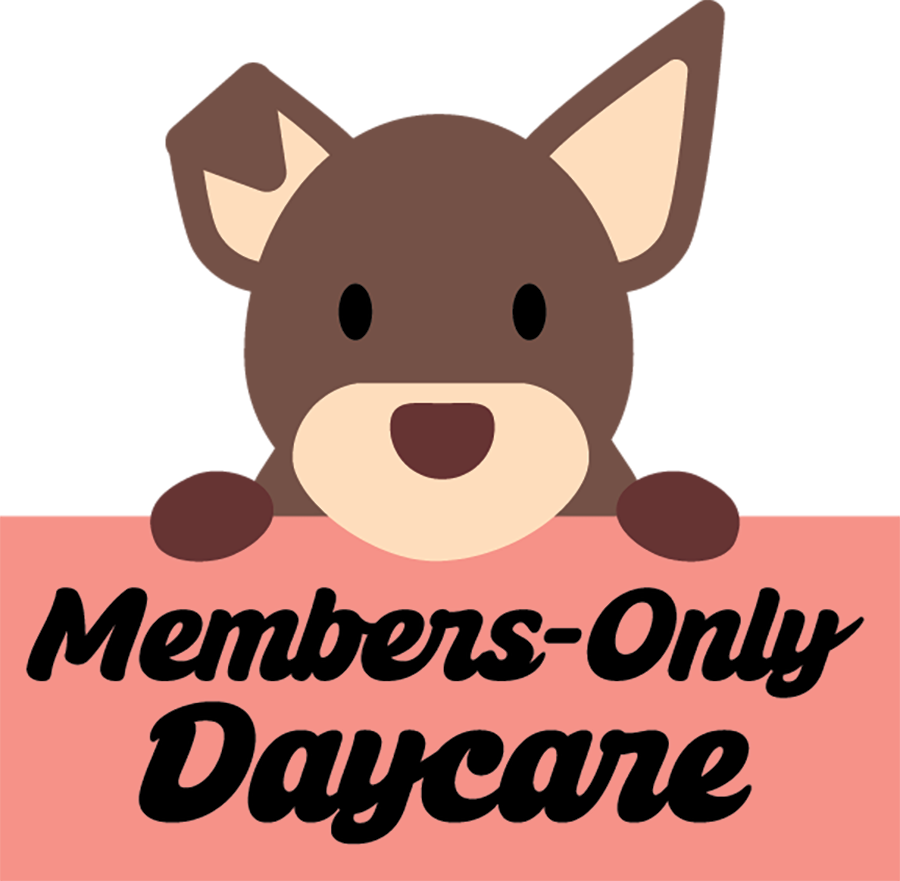
Adding a monthly fee to use your daycare is a game-changer for two main reasons:
1. Your business has a recurring subscription income. That means you get a deposit in your bank account of “X” amount of dollars every month before you’ve even turned on a light or leashed a dog. This is money you didn’t have before, meaning better cash flow to pay for more advertising, staffing, CPD, expansion and customer onboarding experience.
It’s worth noting that pet businesses with integrated subscription revenue like this are more appealing to potential buyers, and can command a higher sale price due to the predictable cash flow.
2. The client is paying upfront just for the right to be able to use the daycare, which increases frequency of use. You might think they would use less services if they are paying a membership fee, but you’d be wrong, because they actually buy more services.
Don’t believe me? Then answer me this: Did you spend more or less money with Amazon once you became a Prime customer?
The answer is you spend more! Statista backed this up in 2019 when they reported non-Prime members spend on average $600 a year, and the Prime members spend on average a whopping $1,400 dollars a year.
- Payments become easier (on subscription).
- Provides peace of mind because they know their dog always has a space at your daycare.
- Promotes an exclusivity factor since only members can use your facility.
You can also offer discounts, but your daycare membership benefits shouldn’t really be about that. Some people will join your membership for the bonus activities, others will join for the member perks and peace of mind, some join for the free “stuff” like the dog’s membership card or the matching member’s-only doggy bandana and human T-shirt, and other people simply join for the recognition that comes with being a VIP member.
Here are some ideas for what you could offer in the different levels of your membership:
 Mutt’s Membership Card
Mutt’s Membership Card Access to Members-Only Facebook group
Access to Members-Only Facebook group Use of Scent Space once a month
Use of Scent Space once a month Weekly 7-point health check
Weekly 7-point health check
Silver
 Bronze Benefits
Bronze Benefits Free bath once a month
Free bath once a month
Gold
 Silver Benefits
Silver Benefits Choice of weekly add-on service (e.g., training session, spa service, one-on-one play)
Choice of weekly add-on service (e.g., training session, spa service, one-on-one play) VIP Birthday Party
VIP Birthday Party
These are just some examples, and you can mix and match depending on what you already offer. The trick to get clients ascending to higher levels is to put some of the most exciting services in the top level of your membership.
I hope this article inspires you to introduce a membership into your daycare that enhances the dog’s experience, makes the client feel like they belong to an exclusive “club” and boosts your profit margins.
Dom Hodgson is Europe’s leading pet business coach, and is known as the Pet Biz Wiz. His mission is to help pet service providers create superior customer service systems that enable them to build an impactful and profitable pet business. Dom has written over nine books, and is a much in-demand speaker. You can instantly download a free copy of his latest book “How to Disnify Your Doggy Daycare Business” by going to www.petbusinessmarketing.com/daycaremagic

 ith the U.S. pet industry valued at nearly $80 billion in 2022 and expected to rise in the coming years,1 as a pet business owner, it’s key that you continue to look for ways to maximize revenue, adapt to customer demand, and improve efficiency and productivity within your organization as it grows. However, protecting your business from potential harm and financial loss is just as important.
ith the U.S. pet industry valued at nearly $80 billion in 2022 and expected to rise in the coming years,1 as a pet business owner, it’s key that you continue to look for ways to maximize revenue, adapt to customer demand, and improve efficiency and productivity within your organization as it grows. However, protecting your business from potential harm and financial loss is just as important.
Investing in insurance is a proactive step you can take to prevent and manage the inherent risks of owning a pet business. And, the right insurance can help recession-proof your business, allowing you to get ahead of costly issues. This article will serve as a guide for what you need to know about choosing or upgrading your pet business insurance policy.

- Pet injuries or illness. A pet is injured or becomes sick while in the care of the business. Insurance can help cover any medical costs or liability claims from the client.
- Property damage. For pet sitters, accidental damage to a client’s furniture or belongings is a possibility. In this case, business insurance would cover the cost of repairs or replacements.
- Injury of staff. Pet business insurance can cover medical expenses, liability claims and losses due to staff leave if employees are injured on the job.
- Theft or vandalism. Unfortunately, theft is an issue many businesses contend with. Insurance can assist you in purchasing new equipment and repairing any damages.
Why Invest In Pet Business Insurance?
Pet business insurance is a specialized type of insurance coverage designed specifically for businesses in the pet care industry. It protects these businesses from financial loss caused by risks and liabilities such as personal injuries, pet injuries, property damage and more. Like any other insurance coverage, it safeguards business assets in the event of an unforeseen accident or dispute.
Consider times when you’ve made a mistake at work, encountered a difficult situation or had a dispute with a client. Here are some scenarios you may have experienced in your business and how insurance helps mitigate them:
- Commercial liability insurance. Protects businesses from claims of injury or property damage as a result of their services or products (e.g., a client slips on spilled water at your facility).
- Professional liability insurance. Protects businesses from claims of negligence or inadequate work. For example, this policy would cover incidents like an altercation between two dogs.
- Property insurance. Covers a business’s physical assets when damaged by natural disasters, vandalism, theft or damage from another nearby business (e.g., a fire or leak).
Having business insurance shows that your organization is responsible and committed to long-term, sustainable success.
Determining your pet business’s coverage needs will help you choose one (or more) of the above policies, but you also need to consider the following key factors:
- Your budget. Decide how much your business can afford to spend on insurance. Balance affordability with quality to ensure you are buying policies with adequate coverage.
- Coverage limits. Assess the risks your business could incur and what may need to be covered as a result (e.g., medical and veterinarian costs, repairs and replacements of property, loss of income, and legal fees and settlements). Any policy you choose should cover each of these areas.
- Legal requirements. Some states require specific types of coverage and minimum liability limits. Check that your insurance provider and policy meet these guidelines before making a purchase.

- Research available providers online and narrow down your list to just a few options.
- Ask your peers for recommendations or advice about choosing a provider.
- Request a meeting with your top choices to ask the insurance agents questions and learn about how the policies work.
Pet business insurance will be there to cover any workplace accidents or disputes that occur, protecting you from hefty financial impacts. Additionally, the right policy will help you remain legally compliant, retain employees3 and provide more positive customer experiences. Remember to keep your unique services and offerings in mind when choosing a policy to ensure your business and financials are kept safe.
References:
- Pet Care Market Size, Share & COVID-19 Impact Analysis. Fortune Business Insights. https://www.fortunebusinessinsights.com/pet-care-market-104749
- Employee Recruitment: A Guide To Finding the Best Talent. RealHR Solutions. https://realhrsolutions.com/employee-recruitment/
- Employee Retention – Nonprofit Catalog. NXUnite by Nexus Marketing. https://nxunite.com/employee-retention/
Casey Dorman is the Sales Manager at Gingr, the leading software for pet care business owners. Originally from Indianapolis, Casey now lives in Colorado with his wife and dog, Dexter. His hobbies include hiking, skiing, and visiting local breweries.
Business
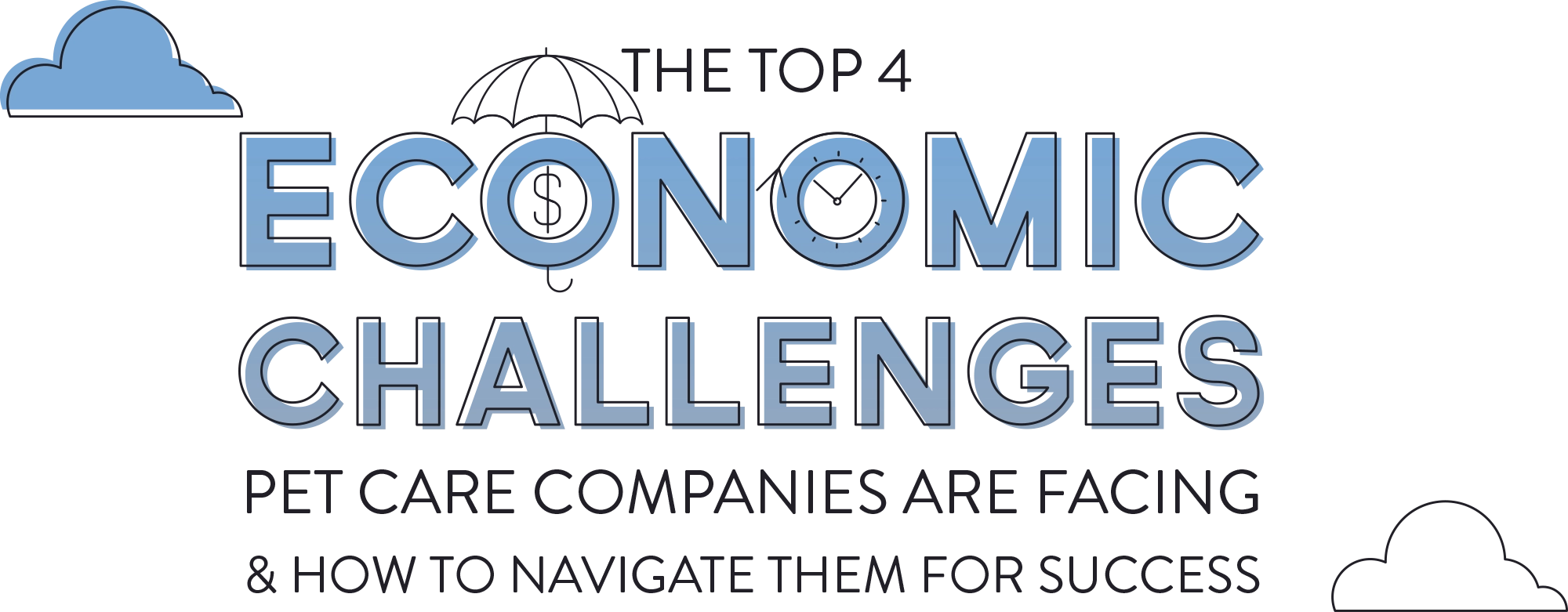
By Laura Laaman
 ith summer just around the corner, pet care companies are gearing up for another busy season…but this one will be very different from recent years. Inflation, more people working from home and consumer spending habits present new challenges, just to name a few. With an ever-changing business environment, savvy business owners shift with the tides while weaker ones get washed away. Outlined below are four economic challenges faced by today’s pet care business owners and powerful strategies to help you navigate them.
ith summer just around the corner, pet care companies are gearing up for another busy season…but this one will be very different from recent years. Inflation, more people working from home and consumer spending habits present new challenges, just to name a few. With an ever-changing business environment, savvy business owners shift with the tides while weaker ones get washed away. Outlined below are four economic challenges faced by today’s pet care business owners and powerful strategies to help you navigate them.



How your company answers new customer phone calls plays a key role in battling this lull. Therefore, employing an adept, well-trained phone team is one of the most beneficial things you can do to boost your revenues, but it doesn’t stop there…
Once your phone team is in place, you need effective marketing to drive leads to your phone lines. Channeling your marketing dollars in the right places can be a challenge, but it’s a critical part of drawing new customers. And once you’ve attracted and converted your customers, they need to be profitable. Most pet care facilities don’t evaluate their prices often enough, especially against inflation. Now is a great time to look closely at your pricing—but be cautious; pricing is a delicate matter that requires the right balance.
If you’re not already offering dog daycare, consider adding a high-quality version to your services in order to appeal to working pet parents, whether they’re at home or not.

All this means fewer vacations for pet parents, and fewer times they’ll need overnight pet care. So, what can be done about it?

Unfortunately, many pet care companies operate with an all-inclusive pricing model, meaning the pet’s activities and enrichment are bundled in their nightly fee under a single price point. Not only does this choke your RPN, but it also caters only to a narrow selection of customers—those with group-friendly dogs who aren’t willing to pay more for a customized experience for their pet. The key is to positively promote a selection of profitable add-on services. Doing so helps increase revenue, but also creates the best experience possible for the pet, which is equally important. If you run an all-inclusive price model, it may be time to consider a switch.


If you’re not already offering dog daycare, consider adding a high-quality version to your services in order to appeal to working pet parents, whether they’re at home or not. If you already offer dog daycare, assess how it can be improved. This could mean offering solo play options for less social dogs, better daycare promotion, upgraded amenities and other opportunities.

Seasonality
In January of 2024, Forbes reported that around 33% of pet owners were millennials.6 Millennials are also the age group that spends the most on their pets, with higher humanization of their pets and a desire for higher-quality pet care services. This means many pet owners are ready and eager to spend money on their furry friends, but not necessarily just overnight care.

Grooming and spa services are another area of opportunity. With the explosive rise of hypoallergenic mixed breeds like doodles, full-service dog spas are even more relevant. Doodles require frequent haircuts, contributing to a sustainable revenue stream in grooming. And with the increasing humanization of pets, luxury dog spa services have risen in popularity. Pet parents are willing and eager to spend money to pamper their dogs with special treatments, even canine massage. Ultimately, customers who use your grooming or training services are very likely to use your other services, too.
As summer approaches, pet care businesses face unprecedented challenges amidst a changing economic landscape. However, opportunities abound for those willing to embrace change and adjust course. By focusing on increased revenues and additional profitable services, your business can weather the storms of uncertainty and emerge stronger than ever.
- Small Business Economic Trends. (2024, February). National Federation of Independent Business. https://strgnfibcom.blob.core.windows.net/nfibcom/SBET-Feb-2024.pdf
- Industries at a Glance: Leisure and Hospitality. (2024, March). U.S. Bureau of Labor Statistics. https://www.bls.gov/IAG/TGS/iag70.htm
- Travel Forecast. (2024, January). U.S. Travel Association. https://www.ustravel.org/research/travel-forecasts
- Offices Around America Hit a New Vacancy Record. (2024, January). The Wall Street Journal. https://www.wsj.com/real-estate/commercial/offices-around-america-hit-a-new-vacancy-record-166d98a5
- Leading In The Age Of Remote Work: Key Factors For Corporate Success. (2023, September). Forbes. https://www.forbes.com/sites/forbestechcouncil/2023/09/14/leading-in-the-age-of-remote-work-key-factors-for-corporate-success/?sh=5f867b3f14a5
- Pet Ownership Statistics 2024. (2024, January). Forbes Advisor. https://www.forbes.com/advisor/pet-insurance/pet-ownership-statistics/
Laura Laaman is president of Outstanding Pet Care. If you’re interested in growing your revenues, any of the strategies in this article, or any of our other proven and guaranteed services, schedule a consultation by calling 1-888-735-5667 or visiting www.OutstandingPetCare.com/contact



n the landscape of pet care services, pet resort operators face the challenge of maintaining high standards of service that ensure the health, safety, and satisfaction of both pets and their owners. A key principle that underpins success in this industry is the mantra, “Inspect what you expect.” This approach is not just a catchphrase but a crucial strategy that underscores the importance of oversight in delegation, cleanliness and overall service delivery.
The following will cover why pet resort operators must prioritize regular inspections and how this benefits the operation as a whole.


To implement an effective inspection cycle, resort operators should establish regular inspection schedules, use checklists to standardize assessments and involve staff in the process to foster a team approach to quality. Systems to inspect can be built in formats of checklists, daily walk-throughs, or even required communications. Set goals for yourself and schedule an inspection of the activity you choose to implement. Use your calendar! As entrepreneurs and leaders, it can be easy to get distracted by the next new and exciting thing. Be sure you’re making time to get back to the basics.
In a sector where customer expectations are high, the commitment to regular inspection is what sets apart the exceptional from the mediocre. It is a testament to the dedication of your team to the mission, a demonstration of their professionalism and a reflection of their unwavering commitment to providing the best possible experience for the pets entrusted in your care.

s owners and operators of animal enrichment centers like doggy daycares, boarding facilities and training centers, we all require some level of vaccination for the dogs visiting our businesses. For example, all you need for a dog to join your daycare group is proof of rabies, distemper, kennel cough and a temperament test.
Seems pretty simple, right? The pet parent will bring in a printout of vaccines and due dates, and then you can update your software. Well, Mrs. Jones arrives with Rocky and hands you that printout. You scan the proof of vaccines looking for familiar words, but come across something more like this:

Some vets will use the specific trade name of the products they carry such as Novibac Intra-trac 3 IN, but that can cause issues when a vaccine is on backorder and alternatives are used. Others will default to a reasonable compromise of names like DA2PP, DHLPP, Intranasal Bordetella and Rabies Vaccine 3-year. So as the vaccine gatekeeper at your facility, you are left with an alphabet soup of names and descriptions.
In this article, I will attempt to explain the important parts and decipher the names you may come across to at least give you the information to ask the right questions. We will cover what I consider to be the “core vaccines” of animal enrichment centers: Rabies, distemper and kennel cough vaccines.

Rabies is generally the easy one. Every facility needs to enforce the rabies vaccine. Rabies presents a public health risk and a risk to your employees, as it is a virus that can pass to people, and it is always fatal for both pets and people. The only acceptable proof of a rabies vaccine should be the rabies certificate—not a receipt from the local pet or feed store or a rabies tag. Also only accept a rabies certificate that is properly filled out and signed. If you are not sure what a real rabies certificate looks like, you can find samples online.


At this point, you should start to recognize several letters. Some of those vaccine names contain a “PP” or “PiPv,” which would be parainfluenza and parvovirus. You also can see “A,” “A2” or “H” referring to adenovirus or hepatitis.
If you keep looking at those names you may see a few more letters floating around like “L” and “Cv.” These refer to leptospirosis and coronavirus, respectively. Don’t panic—this coronavirus is not COVID-19. It’s not even respiratory and is not often used by veterinarians. With maybe a few exceptions, leptospirosis and coronavirus are generally not important for the dogs in an animal enrichment center but may be important for other lifestyle factors.
The final letter in that soup is the “r.” That is referring to a specific type of vaccine known as recombinant, which doesn’t change the components of the vaccine so you can ignore that letter, too.
To recap, keep a lookout for the D, A (or H) and two P’s. Anytime you see a reference to a 4-way, 5-way, 6-way and so on, it simply refers to the number of diseases that a particular vaccine is protecting against.

As you may know, there is not a single virus or organism that causes kennel cough. Kennel cough is scientifically known as the Canine Infectious Respiratory Disease Complex (CIRDC) and it is more like the common cold with many different viruses and organisms that may be the cause. Unfortunately, there is not a true kennel cough vaccine that will protect dogs from all possible infections. Frustratingly, we all deal with a kennel cough outbreak at some point, but having your canine guests vaccinated correctly will reduce the incidence and severity.
All kennel cough vaccines will contain Bordetella bronchiseptica. The better vaccines will also contain adenovirus and parainfluenza. Hopefully, those two look familiar from the distemper vaccine. A unique characteristic of the kennel cough vaccine is that it can be squirted in the nose (intranasal), mouth (oral) or injected like other vaccines, depending upon the brand and preparation.
The most effective way to give this vaccine is intranasal because it stimulates a local immune response in the nasal passages where respiratory diseases begin. Fortunately, most intranasal vaccines have at least Bordetella and adenovirus, and some have the additional parainfluenza. The least effective way to give this vaccine is injectable, largely because injecting a respiratory disease under the skin misses out on the aforementioned local stimulation of nasal passages. So, ideally, dogs will be vaccinated with an intranasal vaccine that is at least a 2-way, or even better, the 3-way.

If it is a requirement at your facility, that is great. If you don’t require it, at least recommend it. And always keep a watchful eye on cases appearing in your community, at which point you will want to start requiring the canine flu vaccine.
It’s important to know your vaccines, or at least the ones that apply to your facility’s protocol. You have a responsibility to the health of the pets in your care. Consider assigning a single employee to be the “Vaccine Czar” so they can develop a deeper knowledge and assist other staff in correctly understanding and recording vaccines. Also, the more knowledge you have, the more your pet parents will trust you—and your entire business is built on trust.
Dr. John Beres is a veterinarian who owned and operated a boarding and daycare facility along with his general practice for 12 years. He is now the CEO and owner of Canine Lab Testing. Canine Lab Testing partners exclusively with pet enrichment centers like doggy daycare and boarding facilities to provide Healthy Pets Healthy Packs solutions, including parasite prevention programs. He can be reached at testyourdog@caninelabtesting.com and found on LinkedIn at www.linkedin.com/in/johnpberesdvm
Profile of Success
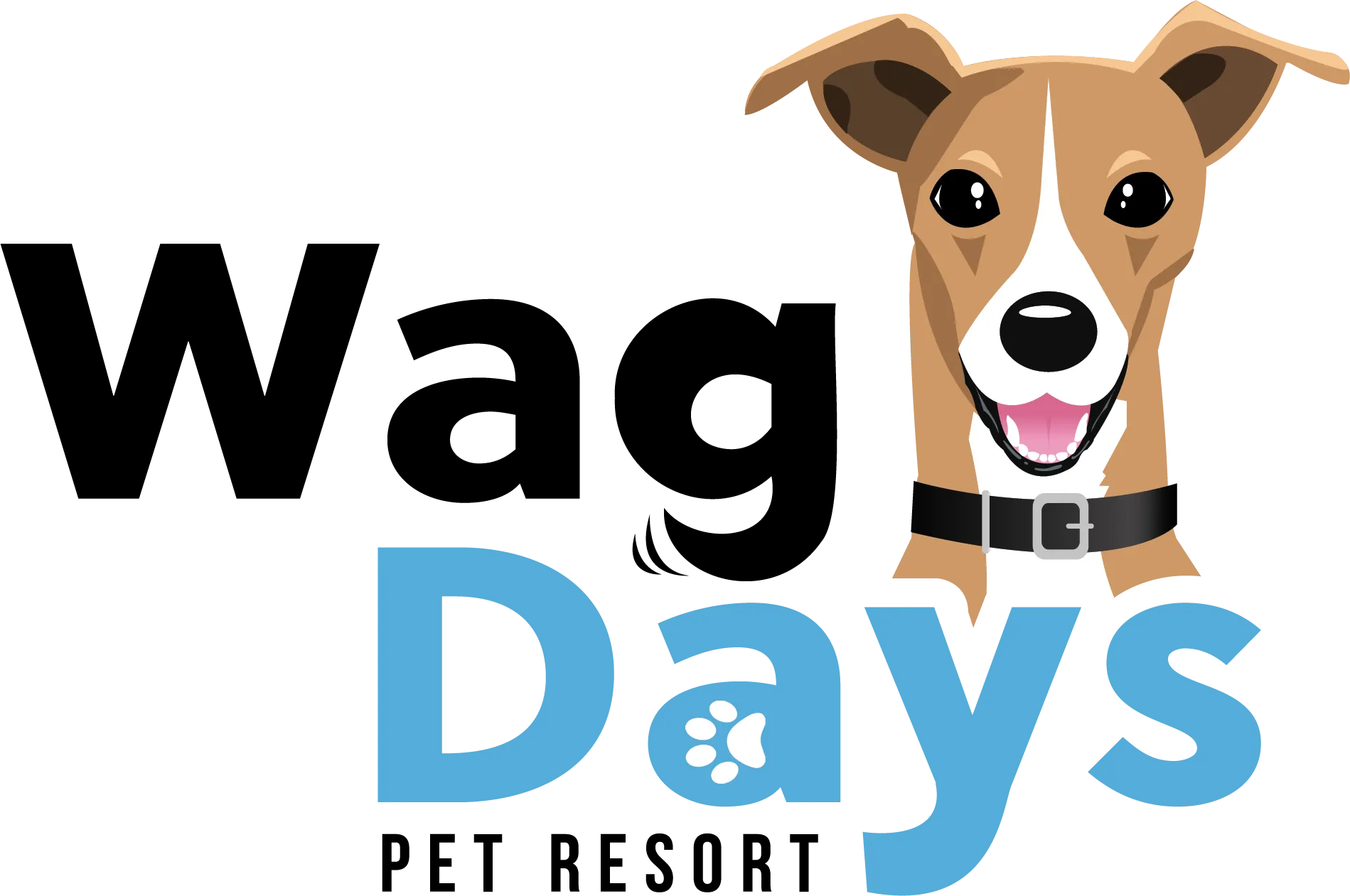


Photos provided by Wag Days Philly
 n 2019 Nora Rodgers opened a small, independent dog walking and in-home boarding business in Philadelphia, Pennsylvania. People loved the convenience she offered them and her business really took off. Within a year, she added three additional dog walkers to her team.
n 2019 Nora Rodgers opened a small, independent dog walking and in-home boarding business in Philadelphia, Pennsylvania. People loved the convenience she offered them and her business really took off. Within a year, she added three additional dog walkers to her team.
It soon became apparent to Nora that her clients and the local dog-loving community needed even more. They needed a place where their dogs could socialize with each other, get exercise during the day and have fun while their owners were at work. So, opening a doggy daycare seemed to be an ideal way to fill these needs.
Nora found a building in her neighborhood that had once been a technical school. She was able to secure the lower section of the building and soon set about transforming it into a doggy daycare. The space is small, only 1,700 sq. ft., but Nora has used every inch to give the dogs and the dog owners of the South Philly area a “doggone” good experience.


Although delayed, Wag Days Philly eventually opened its doors on June 10th, 2020. They started out offering daycare and dog walking services, but as they adapted to their clients’ needs, they dropped the dog walking and added more daycare programs and other services.
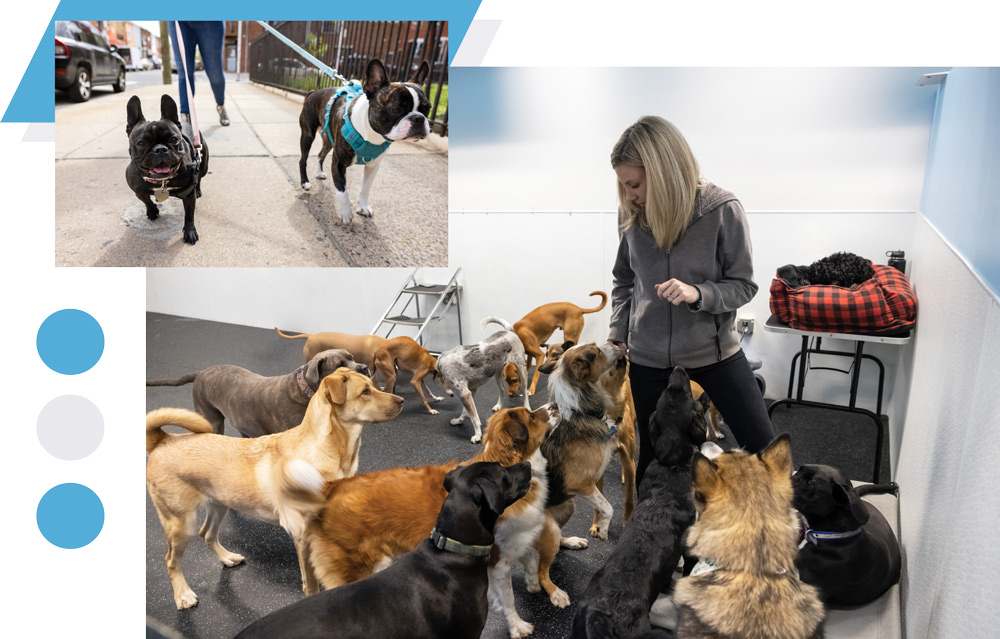


With 40-45% of their daycare dogs enrolled in enrichment activities every day, it is their most popular daycare program.
“We heavily promote our enrichment-based daycare,” Nora adds. “We feature it through videos and photos on Facebook and Instagram several times daily. Owners and prospective clients see what we and the dogs are doing all day long. These posts generate a lot of interest in our programs.”
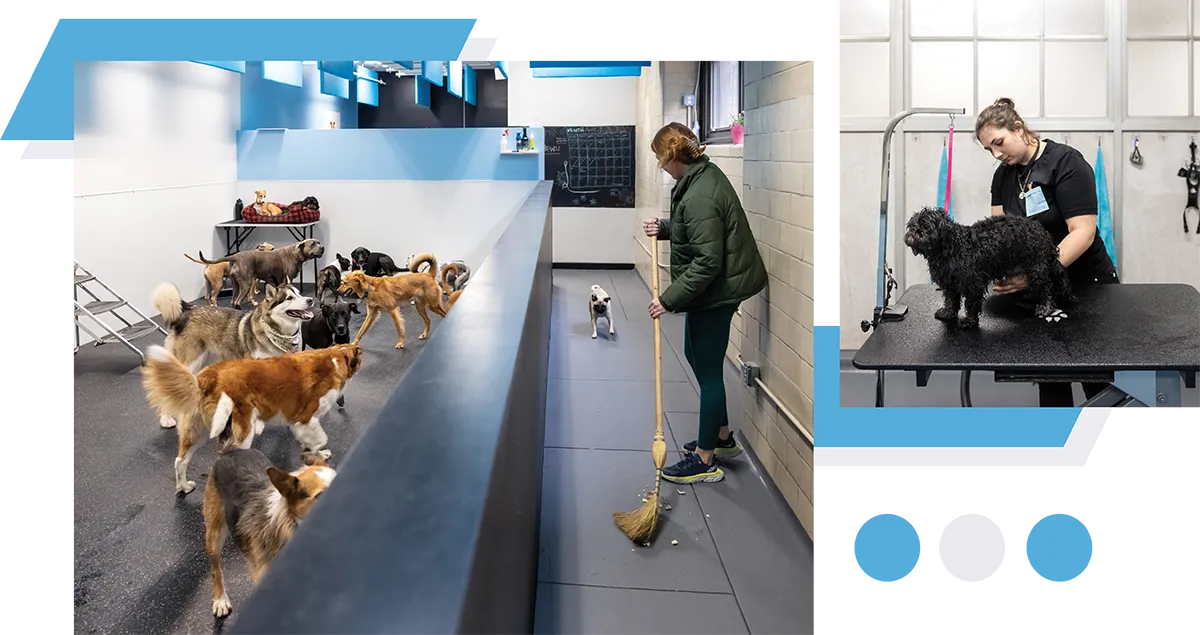



“We have found that our membership program is a great way to get people to commit to coming,” Nora says. “In addition to discounts on daycare, the members receive other perks.
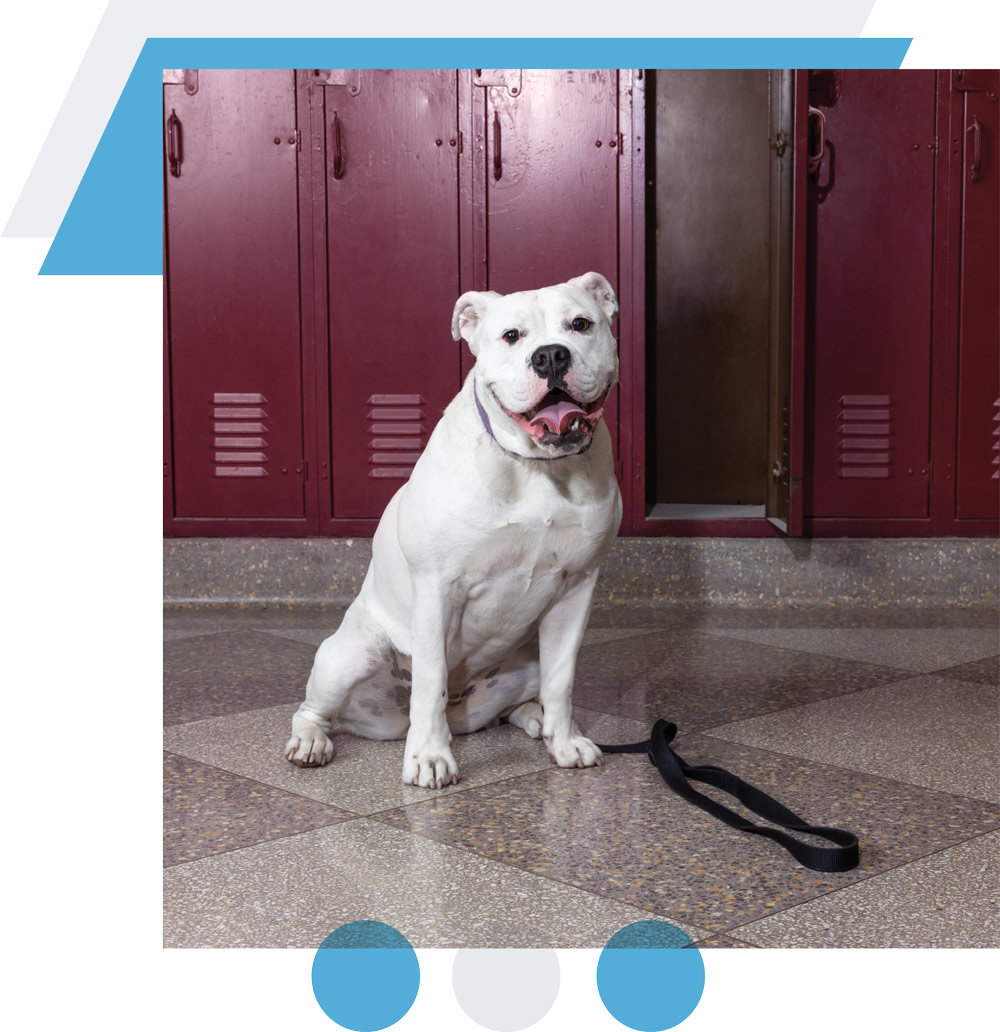

When it comes to training, Wag Days offers a Puppy Training program, a Play and Train program, and a Stay and Train program. In the Puppy Training program, the pups attend daycare and get one-on-one sessions with a trainer throughout the day where they learn basic commands, manners, leash training, crate training and more. With the Play and Train program, dogs also attend daycare but they receive individualized training sessions throughout the day and go home at night. The Stay and Train program gives each dog one-on-one training sessions and includes socializing, play and rest times. The dogs then board overnight at Wag Days until the completion of their training.

“I believe in constantly changing to give the community what they want,” says Nora. “We really try to accommodate all the people’s needs and implement new ideas for the best in pet care.”
Wag Days has 10 full- and part-time employees, which Nora says are the “lifeline” of her business, and surely a big part of why Wag Days has all five-star reviews on Google.
Their website, www.wagdaysphilly.com, is where people get their first look at the facility and all the services they offer. They get to see what’s included in their training programs, boarding options, daycare and enrichment choices, and client testimonials.
Due to its success, Wag Days is opening their second location at the end of April 2024. It is three times the size of their flagship facility and is located about twenty minutes from it.

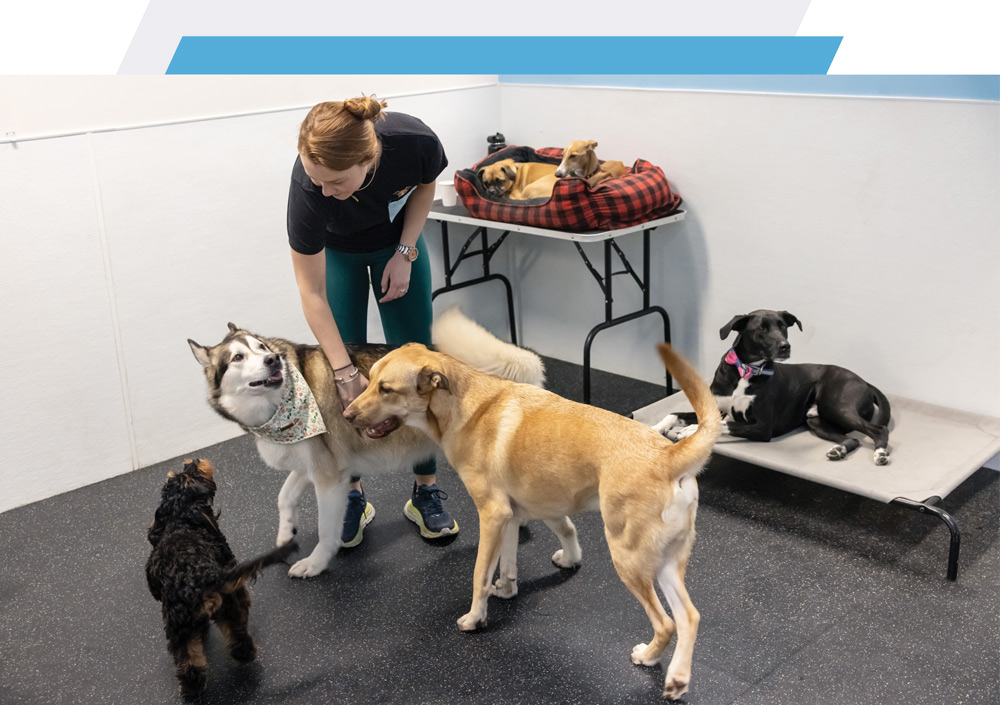
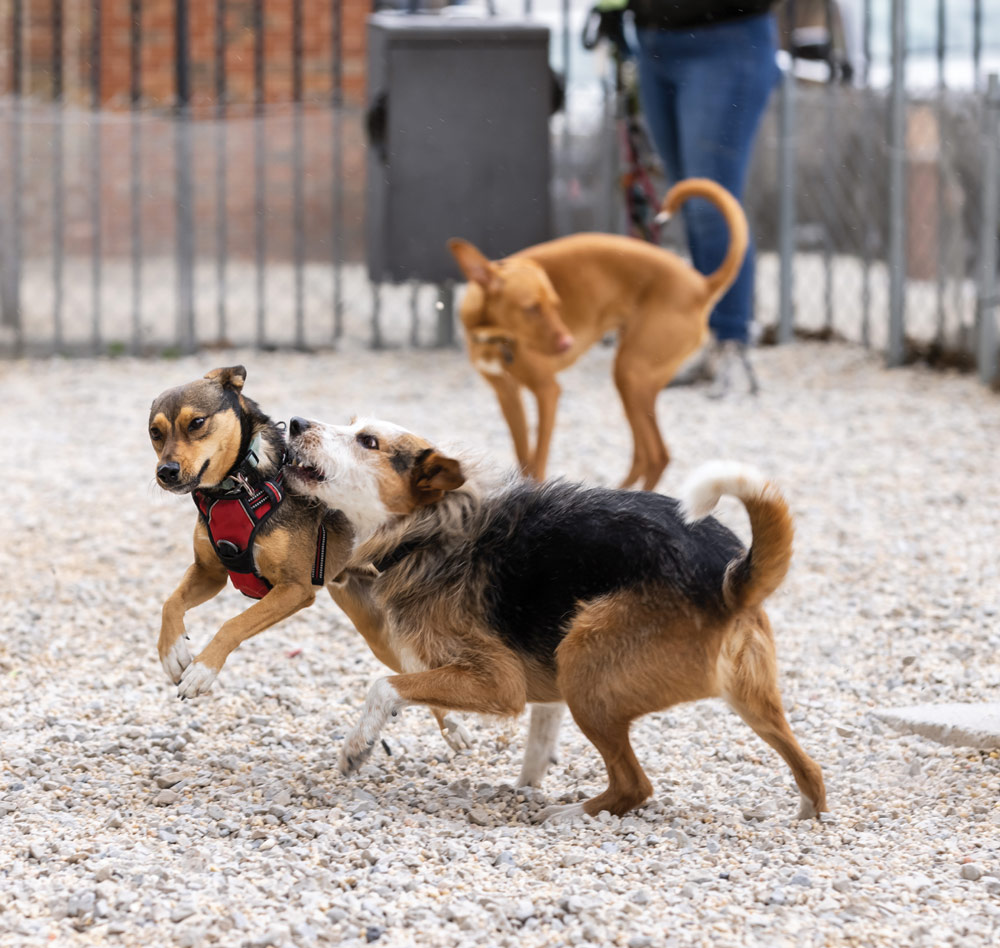

With a very modest beginning in dog walking and in-home boarding, Nora Rodgers, along with her staff, have turned Wag Days Philly into a thriving business during an exceedingly difficult economic period. So much so that the demand for the personalized services and other programs that they offer has prompted them to open a second, much larger, location. Now, that’s something that will get everyone’s tail wagging!
Think Tank

 n the increasingly competitive pet industry, distinguishing your business from the crowd is key to long-term success. To do that you need to understand and utilize your Unique Selling Proposition (USP). A USP should be the foundation of all your branding and marketing, serving as the definitive reason why your services are better than and/or different from the competition.
n the increasingly competitive pet industry, distinguishing your business from the crowd is key to long-term success. To do that you need to understand and utilize your Unique Selling Proposition (USP). A USP should be the foundation of all your branding and marketing, serving as the definitive reason why your services are better than and/or different from the competition.
Identifying and leveraging a USP is not just about showcasing what you do, but about highlighting the unique value you bring to pet owners and their furry friends.
Identifying Your USP
In a nutshell, your USP is what makes you different and unique from all the other pet businesses out there. It’s a clear statement that describes the distinct benefits of what you do, explains how you solve customers’ needs and communicates how you differ from the competition. It’s what makes your business stand out in a crowded marketplace where customers are bombarded with choices. Here are a few steps you can take to identify your business’s USP:
- Know Your Audience. The first step is to understand your target market and who you’re trying to serve. What do your ideal clients look like (both dogs and people)? What are their specific needs, wants and pain points?
- Analyze Your Competition. Look at what your competitors are doing and identify areas where you excel or offer something they don’t. This could be anything from unique programs, extended hours, expertise in a specific area (like puppies or enrichment) or even how you engage with your customers.
- Highlight Your Strengths. Consider what makes your business unique. It could be your commitment to quality, smaller play groups, that you have trainers on staff, special services or your approach to working with the dogs. Your strengths should align with what your target market values most.
- Solve a Problem. A compelling USP often addresses a specific problem that competitors are ignoring. If your business solves a unique problem or addresses a particular need in a way that nobody else does, that should be a part of your USP.
Leveraging Your USP



Fern is the founder of Overdog Digital, a digital marketing & consulting agency that helps dog daycare and boarding facilities attract, convert, and keep more customers by creating winning marketing campaigns and providing the business guidance to build momentum and spark long-term growth. Fern also has programs to train daycare staff, is a dog behavior consultant, and has a dog training business in New Jersey. He is the author of eight books and a popular speaker at national conferences and private events. To join The Dog Daycare Business Think Tank or ask a question, go to: www.facebook.com/groups/dogdaycarethinktank
Industry News
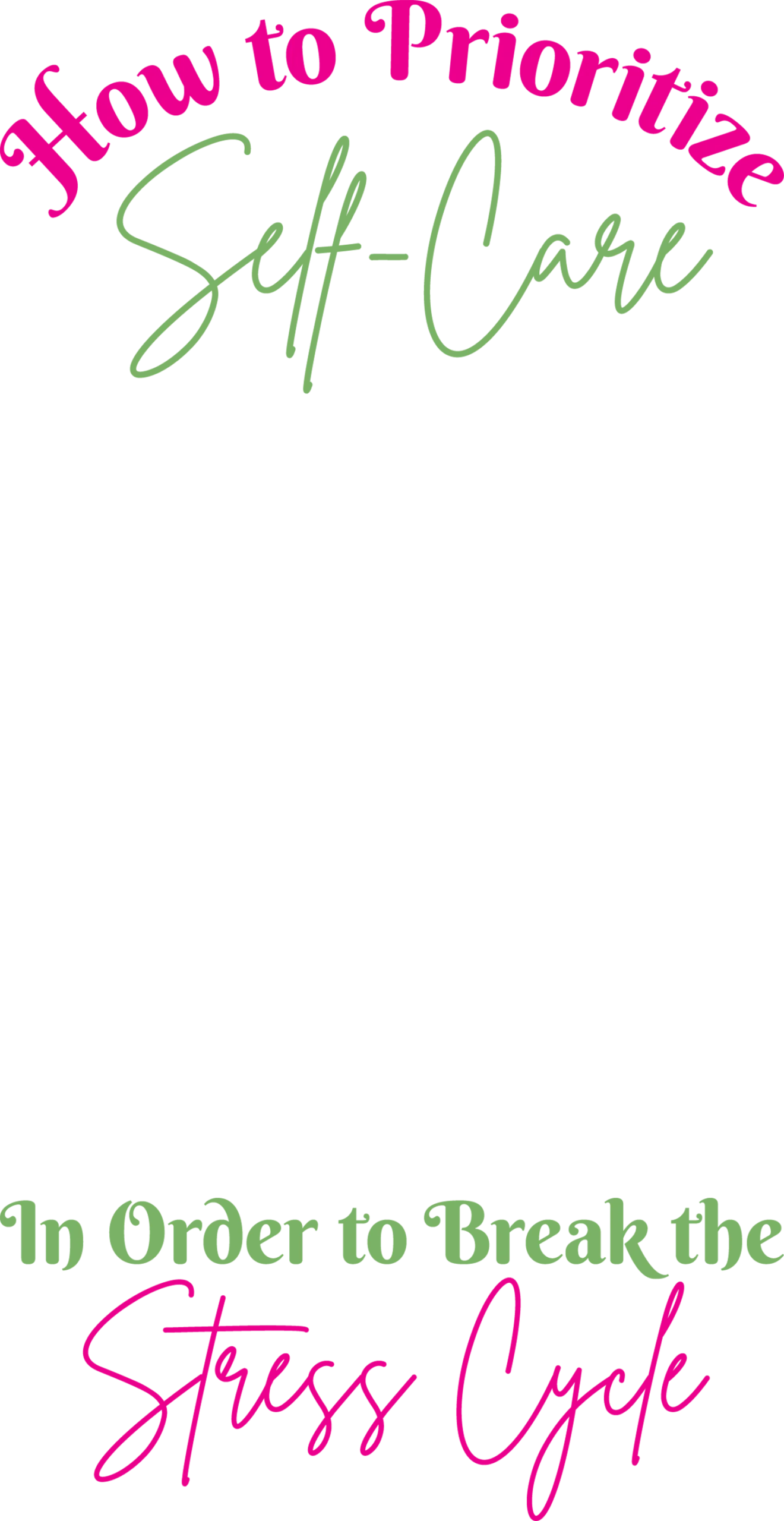
 elf-care is a lever you can pull to prevent overwhelm or stop a stressed-out tailspin. However, over the past year or so, the term self-care has been marketed as superficial or luxury-type habits. Yet, it’s much more important than social media has led you to believe…
elf-care is a lever you can pull to prevent overwhelm or stop a stressed-out tailspin. However, over the past year or so, the term self-care has been marketed as superficial or luxury-type habits. Yet, it’s much more important than social media has led you to believe…
For individuals who work one on one with animals, oftentimes there is a personality type or a few types who are drawn to the work—those who may absorb or internalize the stress they encounter from the pets they care for daily. Without a way to neutralize, recalibrate and realign, there comes a tipping point…where you lose yourself.
This is why it is of the utmost importance that animal caregivers routinely “cleanse.” Just as you would shower daily, it’s necessary you tend to your energy and state of being. Emotional intelligence (E.Q.) guides you to change your relationship with yourself, for the better, resulting in:
- Reduced Levels of Burnout
- Deeper Sense of Contentment
- Higher-Quality Relationships
- Increased Earning Potential
Your E.Q. tunes your awareness to recognize, understand and manage your emotions as well as that of others.
I have worked with animals for over twenty years, so when I think of others, naturally, animals are included in that. By tuning your frequency—kind of like a car radio—you can tap into states of being that serve you in the moment when handling stressed pets and afterward when handling yourself and sorting through all the “input” that occurs on a daily basis.
Self-care is not squandering time, mindless eating, being “mean” or self-indulgence. Instead, it’s consciously creating congruence within yourself.
To determine if you’re living in accordance with your core values1—with what is most important to you—and acting in an intentional way to be the person you want to be, start by asking yourself these questions:


Next you’ll want to evaluate your current stressors. Similar to a mind dump—write out all the things that are causing you annoyance, discontentment or distress. Put it out there for the moment, for your eyes only, freeing up internal bandwidth.
Lastly, get out your calendar and deliberately schedule time for these various action steps. Include your significant other or whomever would need to know that you are carving out time to tend to these things. Plan time to “worry” so that you aren’t doing it at bedtime or at the dinner table with your family so you can remain present.
You become the leader of your life; life is no longer happening to you. This goes back to showering, because the practice of self-care—making the choice daily, throughout the day—is something that you’ll do from now on. It’s not a one-and-done thing.

become the leader of your life; life is no longer happening to you.
When you connect with yourself, you are able to mitigate risks and find creative solutions to your problems or things that bring you stress on a regular basis. You may even be able to implement changes in your workplace to reduce the cycle of stress shared by animals and their human caregivers. This principle and action steps will move you in the right direction to cultivate and continuously prioritize your wellbeing.
References:
- Machel, R. Core Values: Start where you are. Get MotiVETed. https://getmotiveted.com/wp-content/uploads/2023/03/Copy-of-Core-Values-GM-.pdf
- Machel, R. A sample of top tools. Get MotiVETed. https://www.getmotiveteduniversity.com/courses/downloadable-templates
New Products
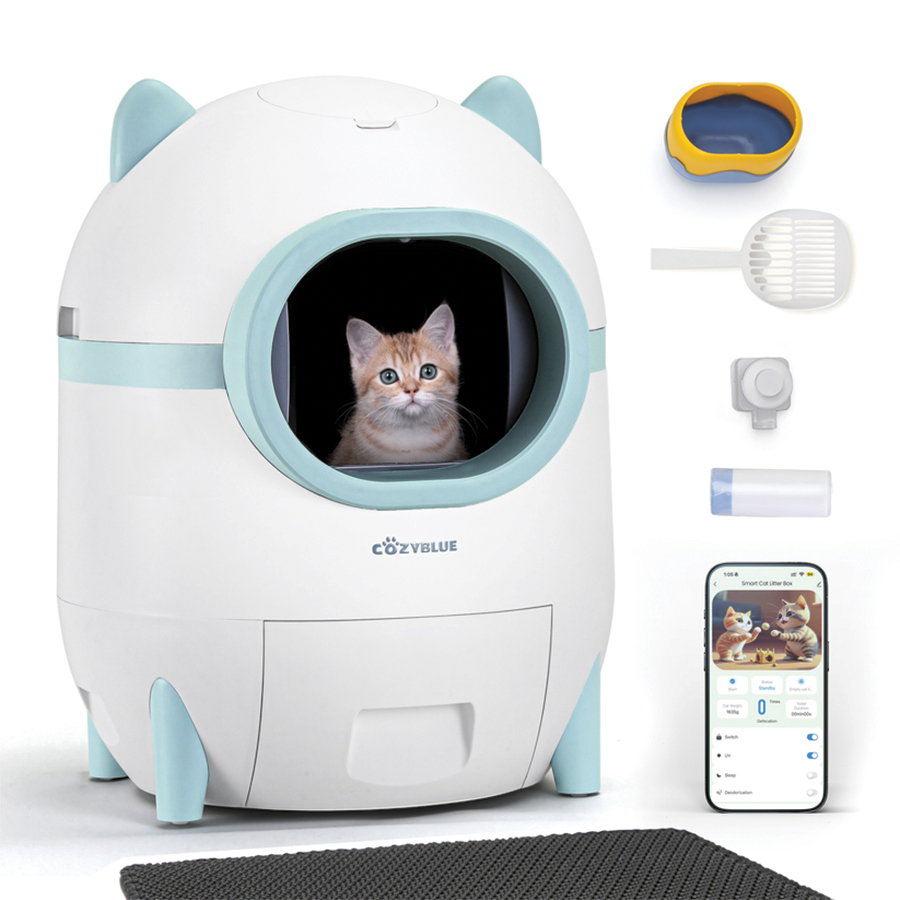
COZYBLUE SMART AUTOMATIC SELF-CLEANING LITTER BOX
The COZYBLUE Always-Open Self-Cleaning Cat Litter Box is designed to focus on the two most important aspects for feline companions—safety and comfort. The “Always Open” design ensures that your feline friends can access the litter box without the risk of getting caught or stuck by moving parts. The extra-large space provides ample room for larger cat breeds and accommodating multiple cats comfortably. The innovative dual-pattern sifter design is compatible with clumping cat litter of different shapes and sizes, and the 24/7 Activity Log records the machine’s activities to help establish a cat’s behavioral pattern. www.cozybluepet.com

OUTWARD HOUND THINK N’ THRIVE PLUSH TREAT PUZZLES
In collaboration with enrichment pioneer Nina Ottosson, Outward Hound® debuts the latest addition to its Think N’ Thrive® dog toys line—plush treat puzzles. This unprecedented collection offers treat-seeking play in squeaky plush toy form, providing double the incentive and reward. Outward Hound Think N’ Thrive mind enriching dog toys give treat-loving dogs a more fulfilling playtime that is mentally stimulating, physically engaging, and emotionally rewarding. Our toys allow dogs to act on their natural behaviors and use their minds, senses, and instincts to problem-solve and actively relieve stress while they play. outwardhound.com/think-n-thrive




